This document discusses using HR analytics to improve employee performance through performance appraisals. It proposes that subjectivity bias in performance appraisals decreases perceived accuracy and fairness, reducing willingness to improve. The use of HR analytics can reduce subjectivity bias by providing more objective performance data, increasing perceived accuracy and fairness and thus improving willingness to perform. A conceptual framework is developed linking these factors to explain how HR analytics can address issues in performance appraisals to boost employee motivation and performance.
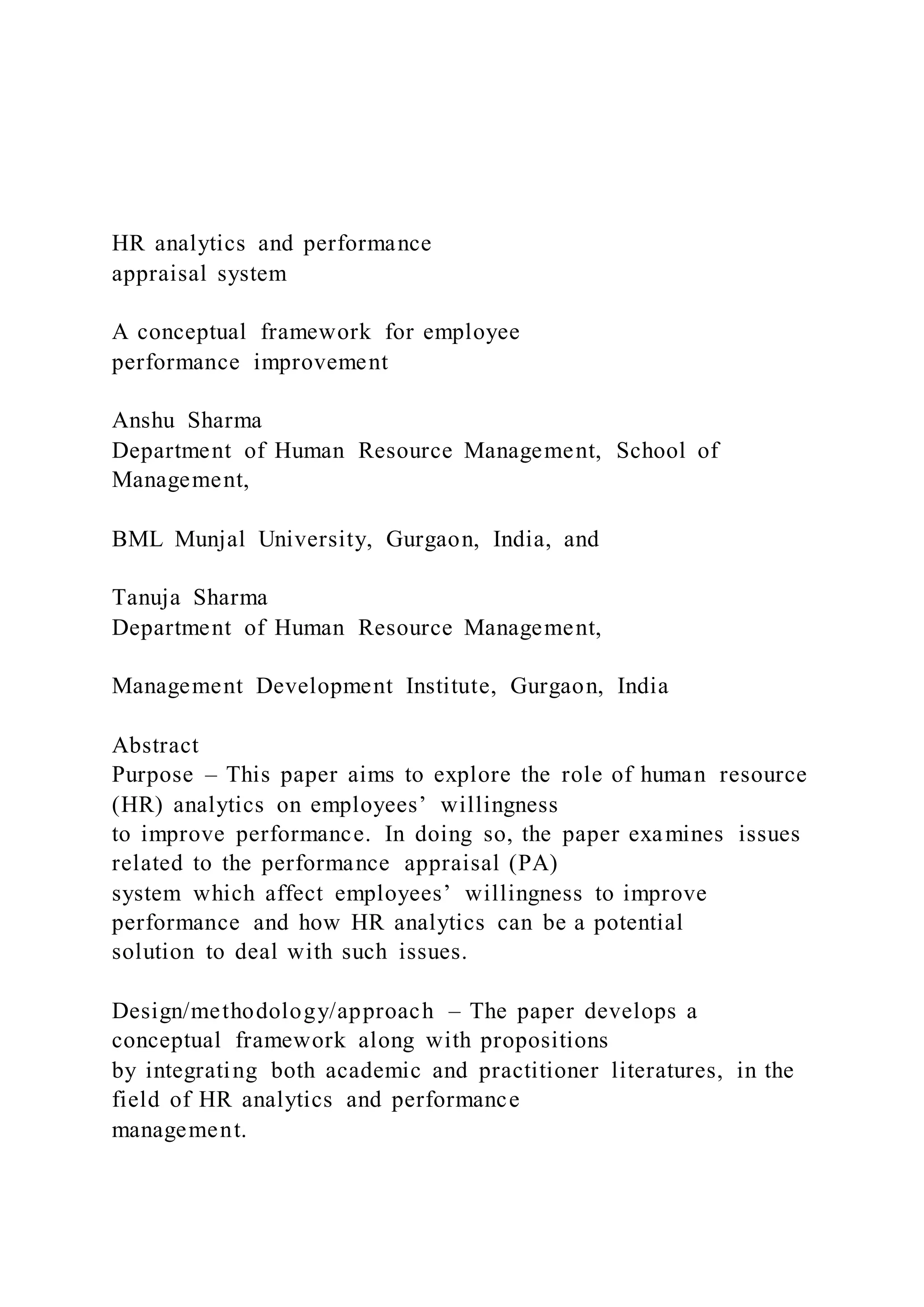
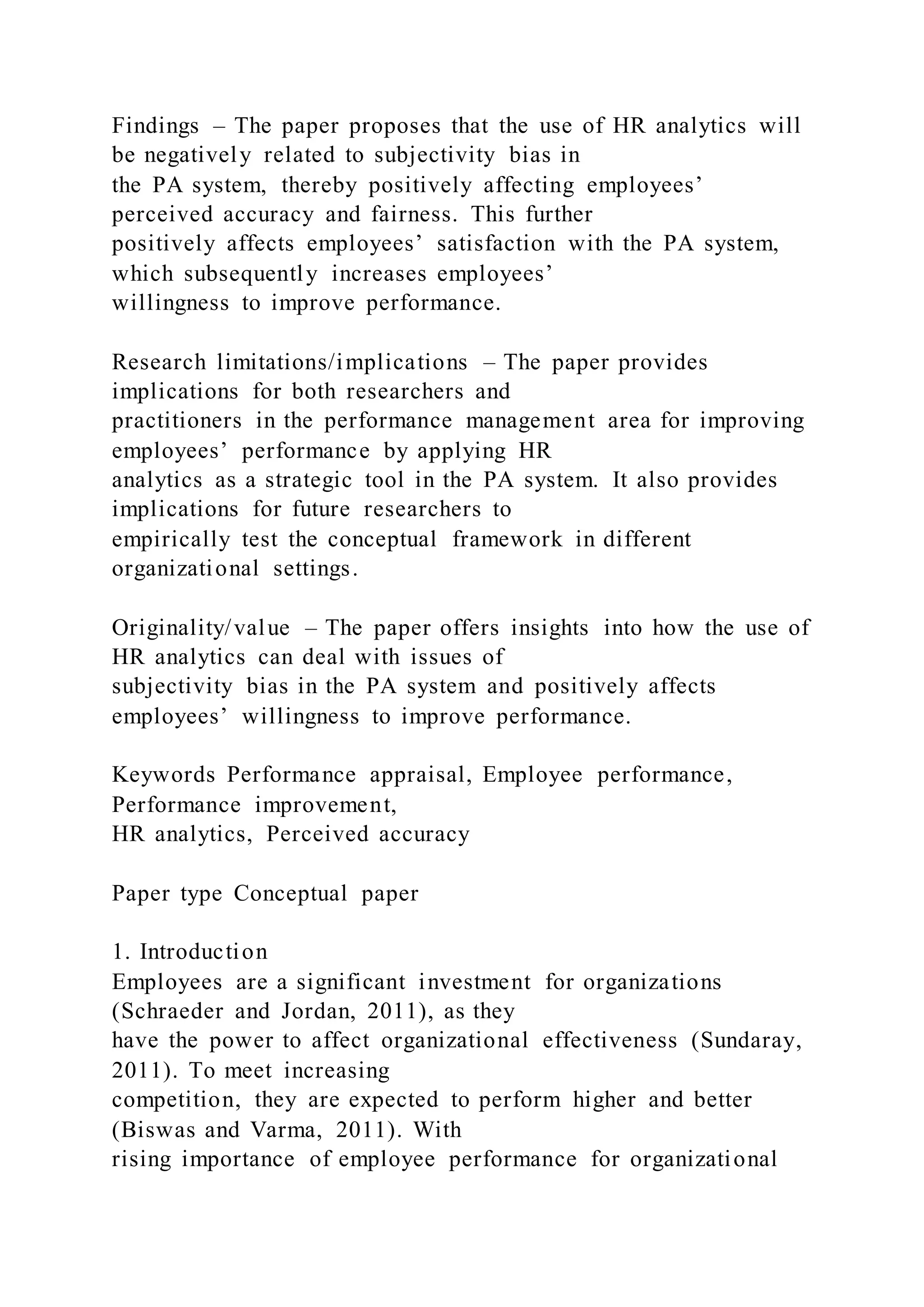
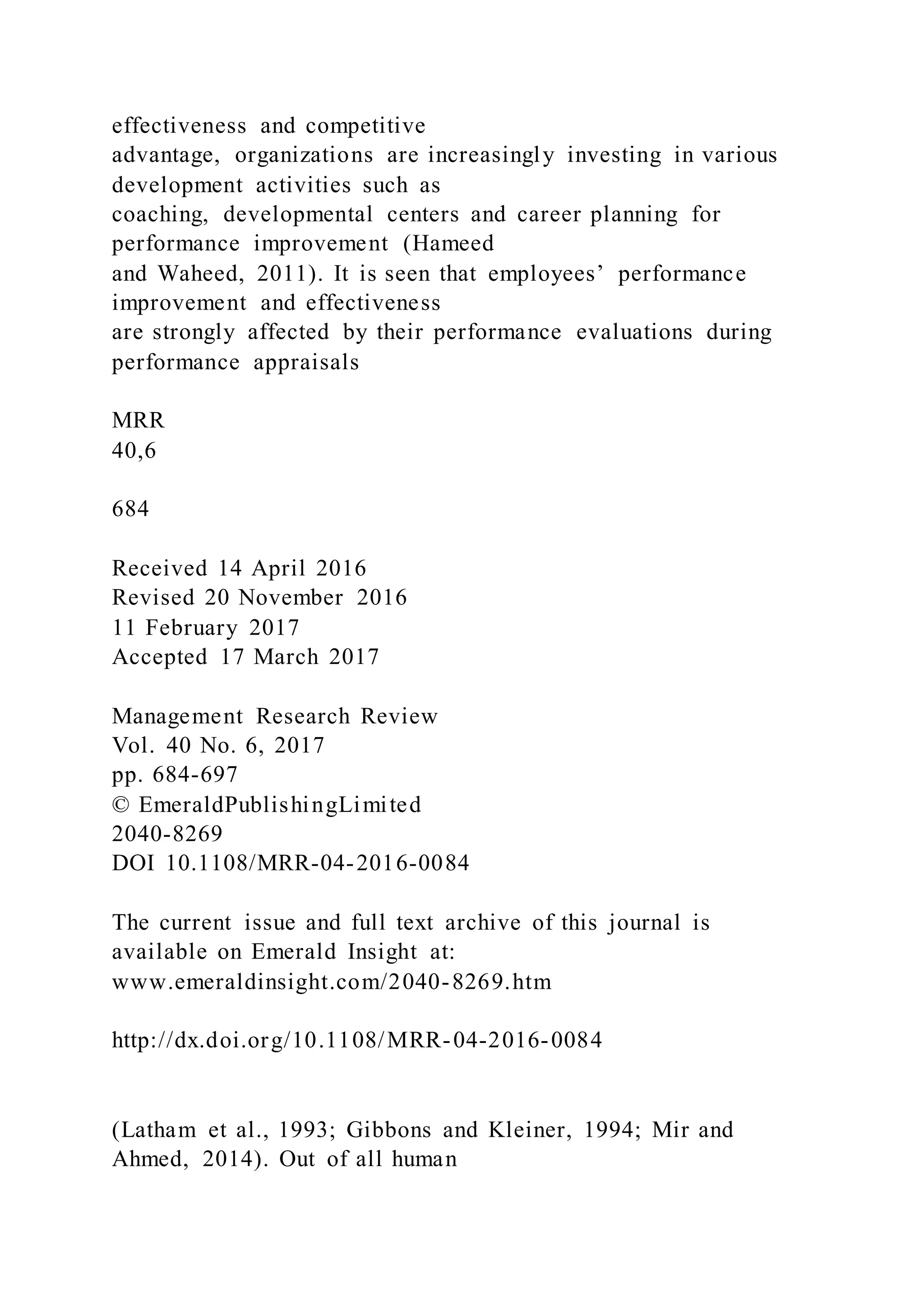
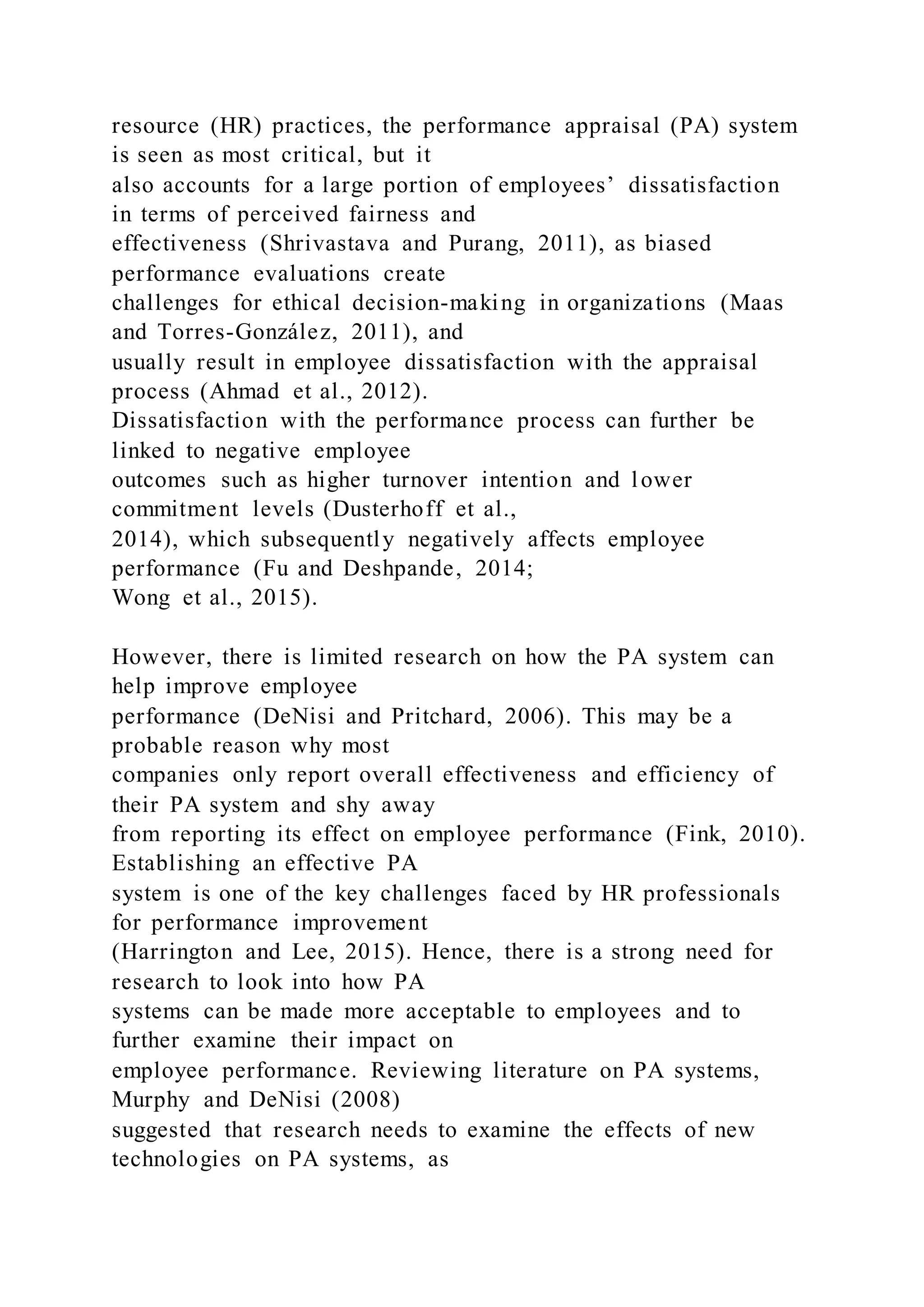
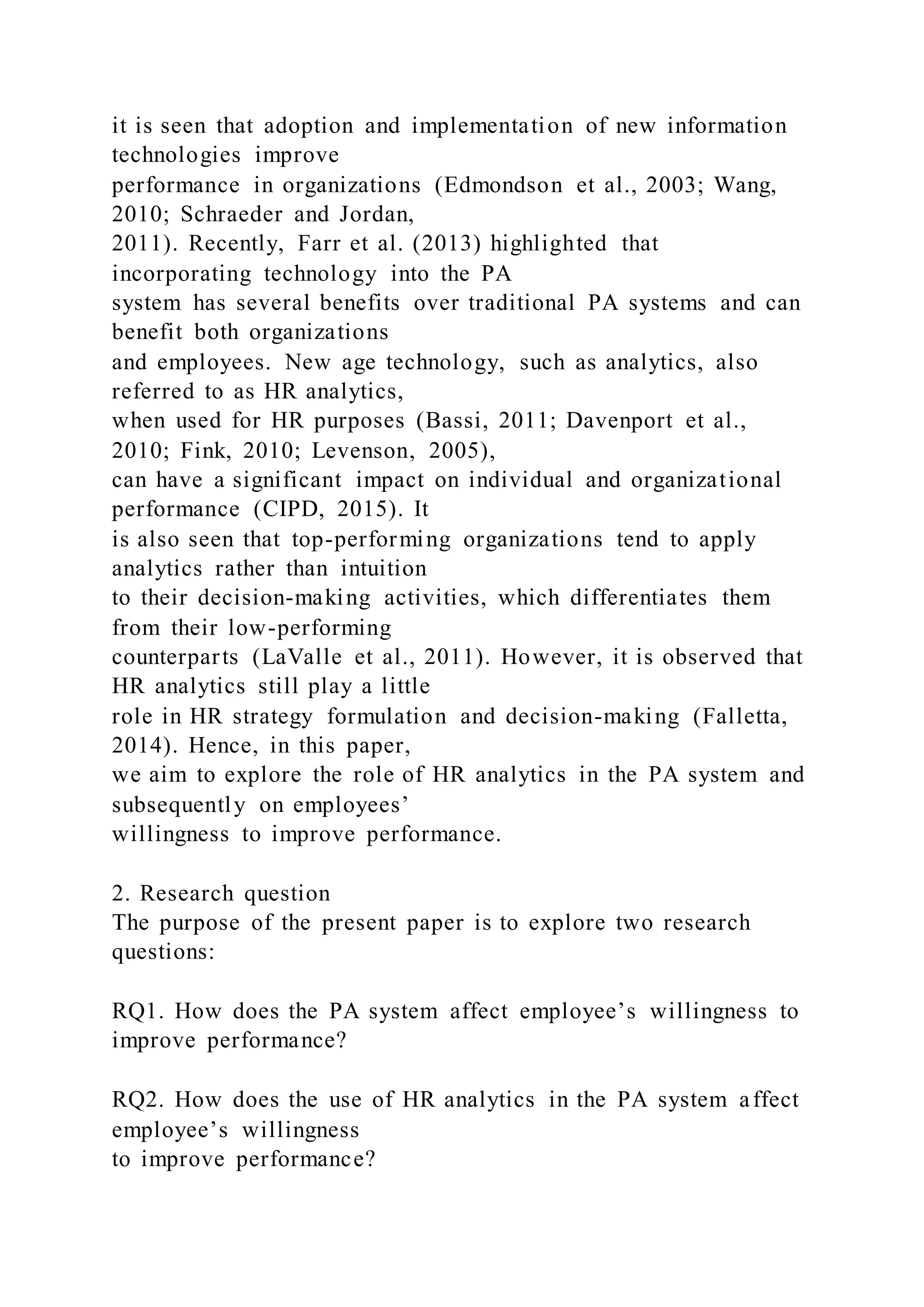
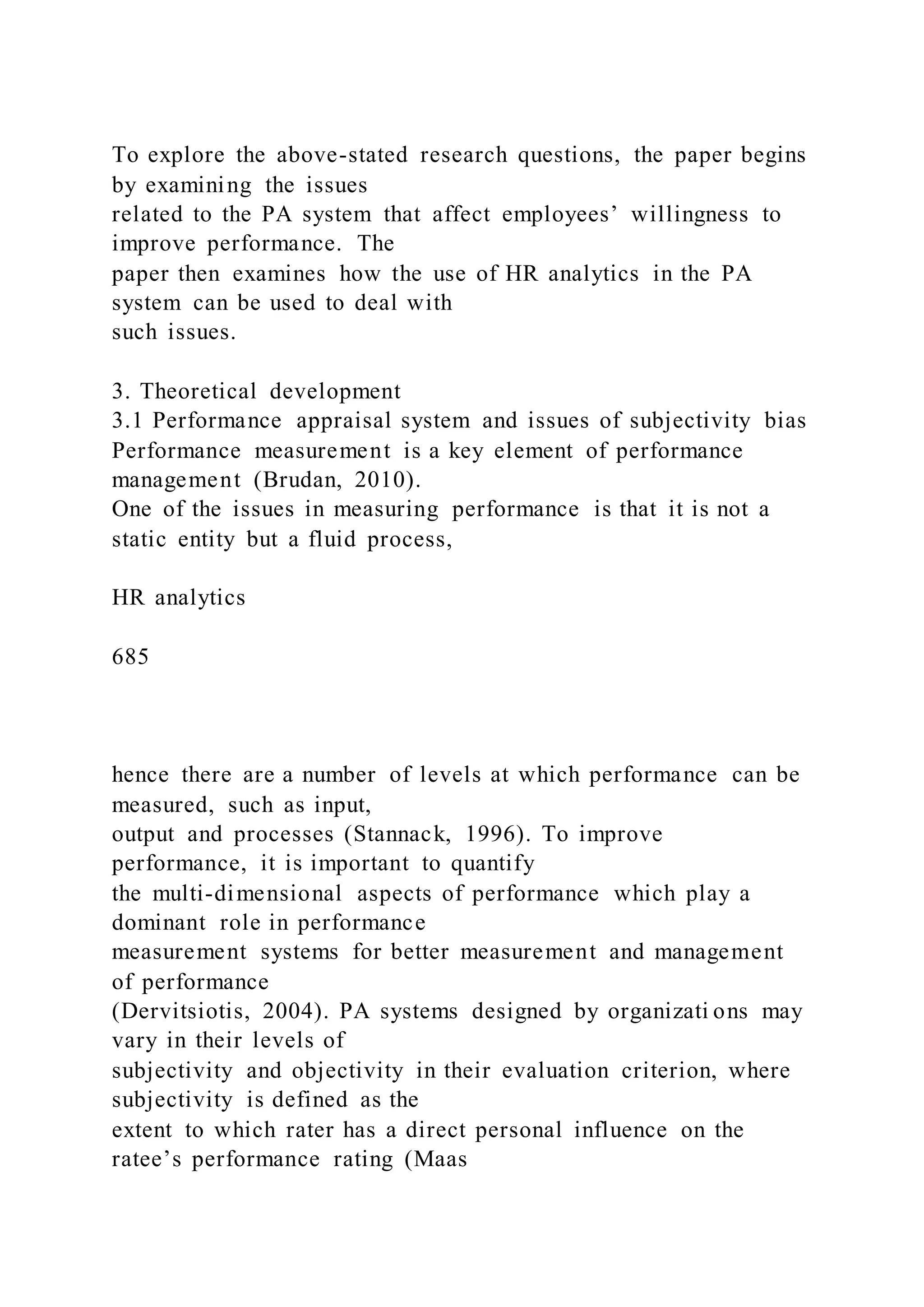
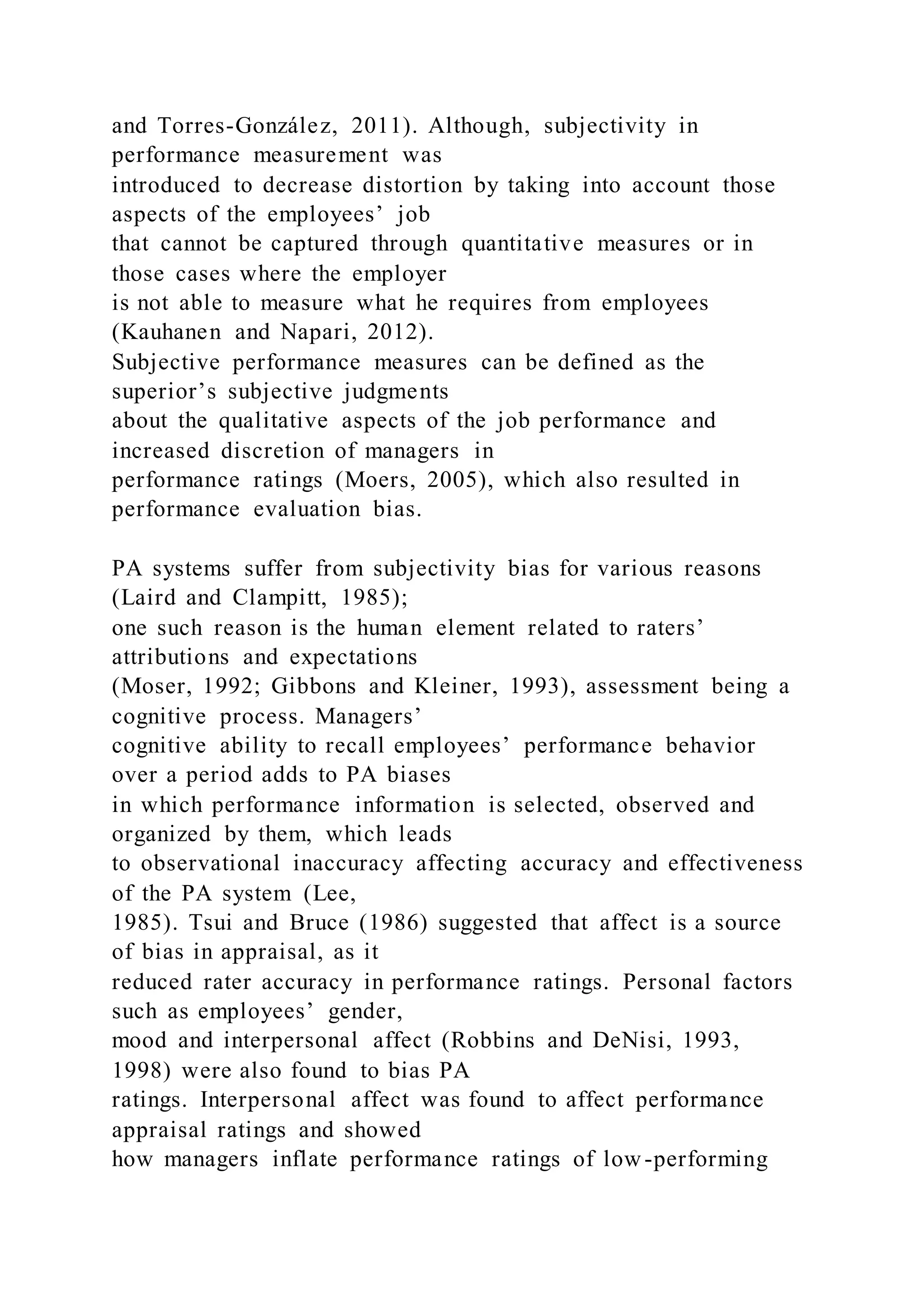
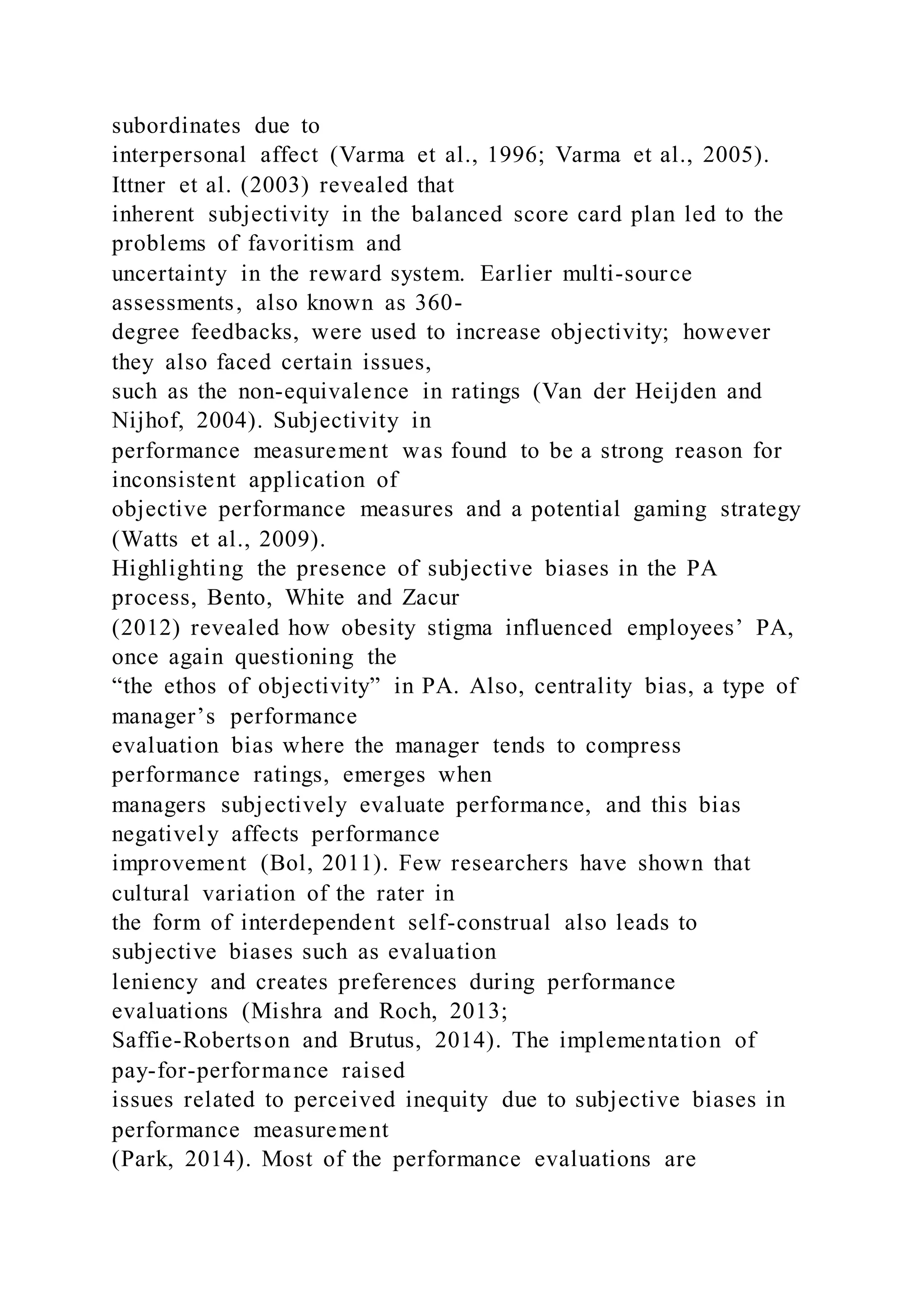
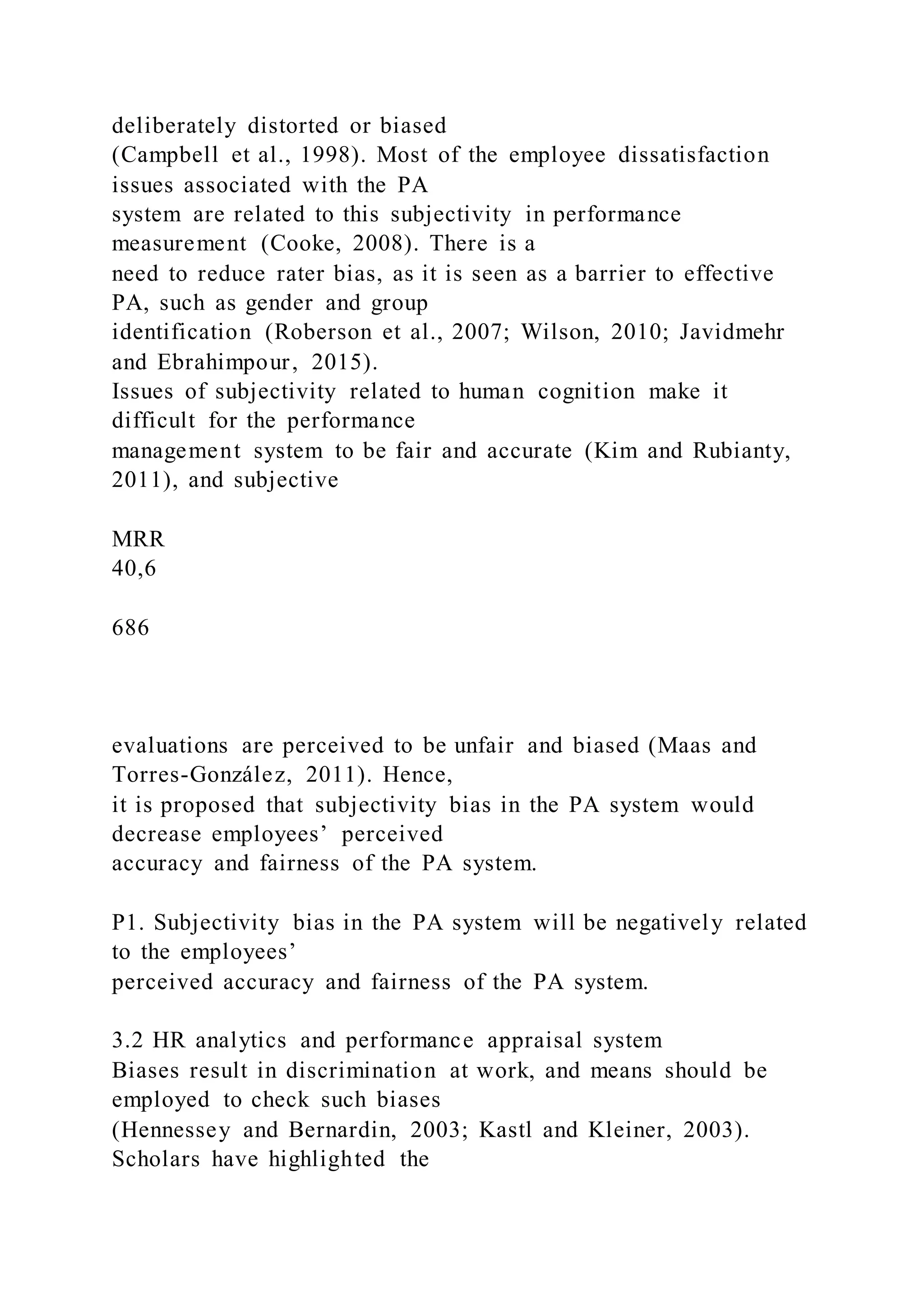
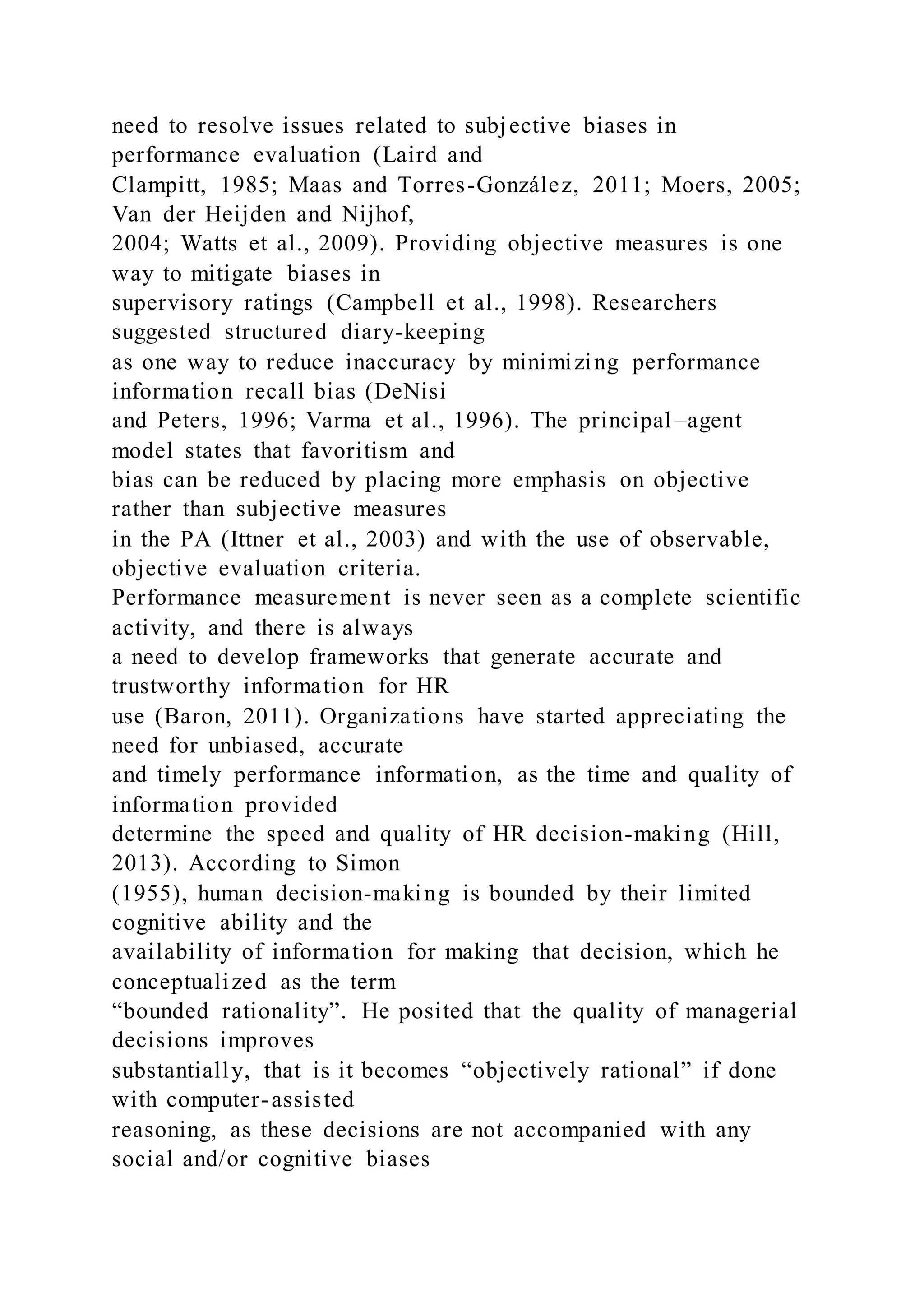
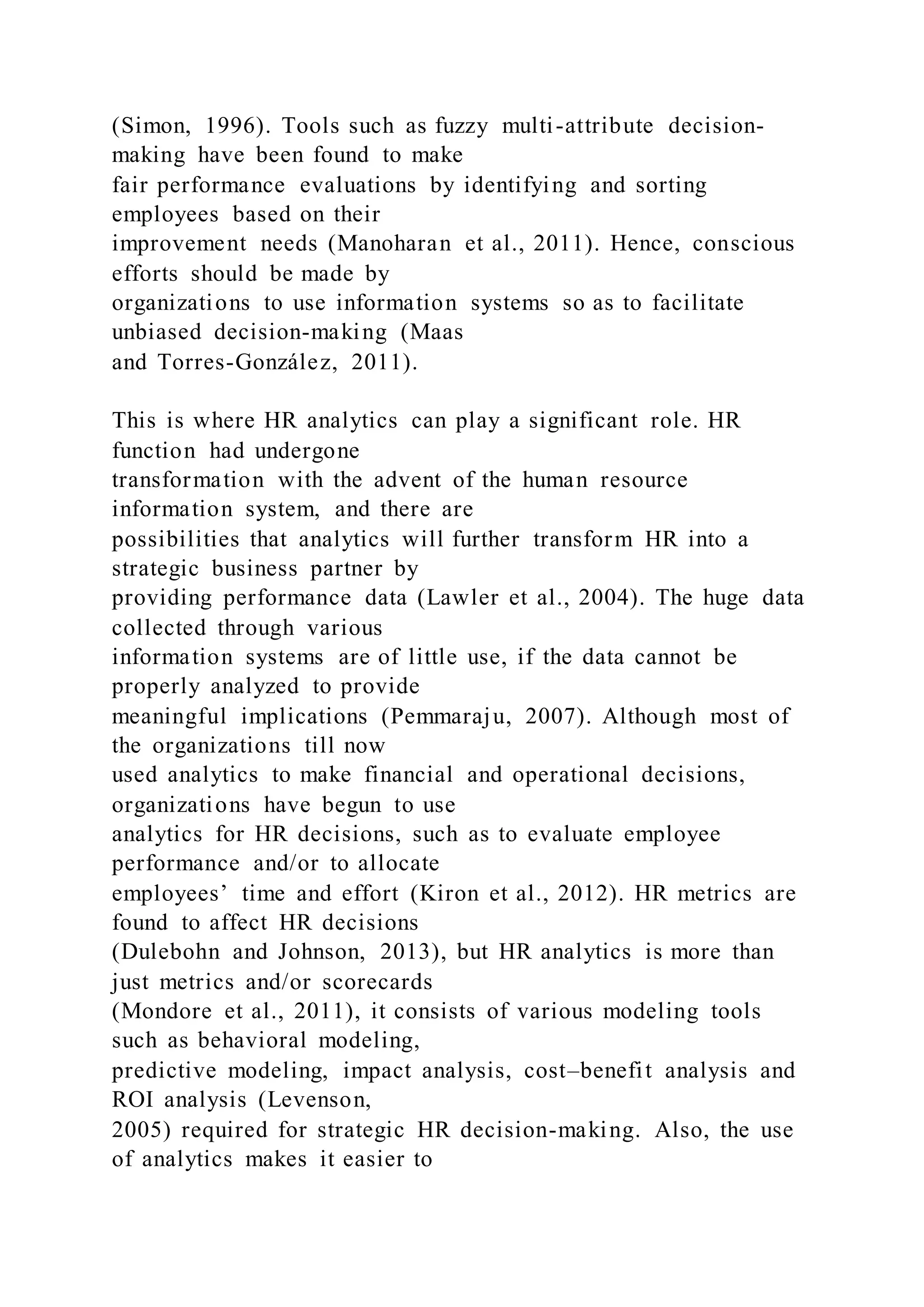
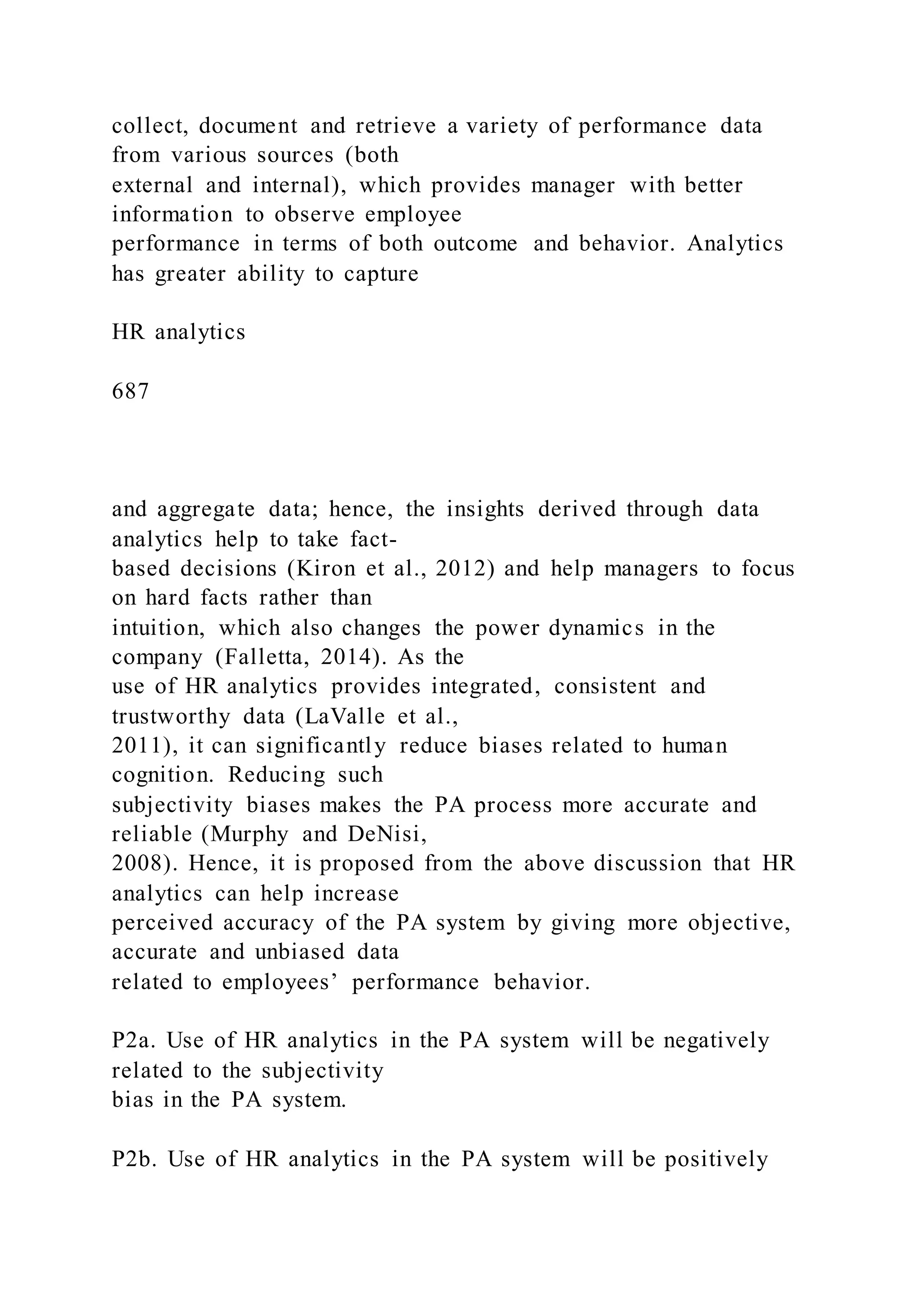
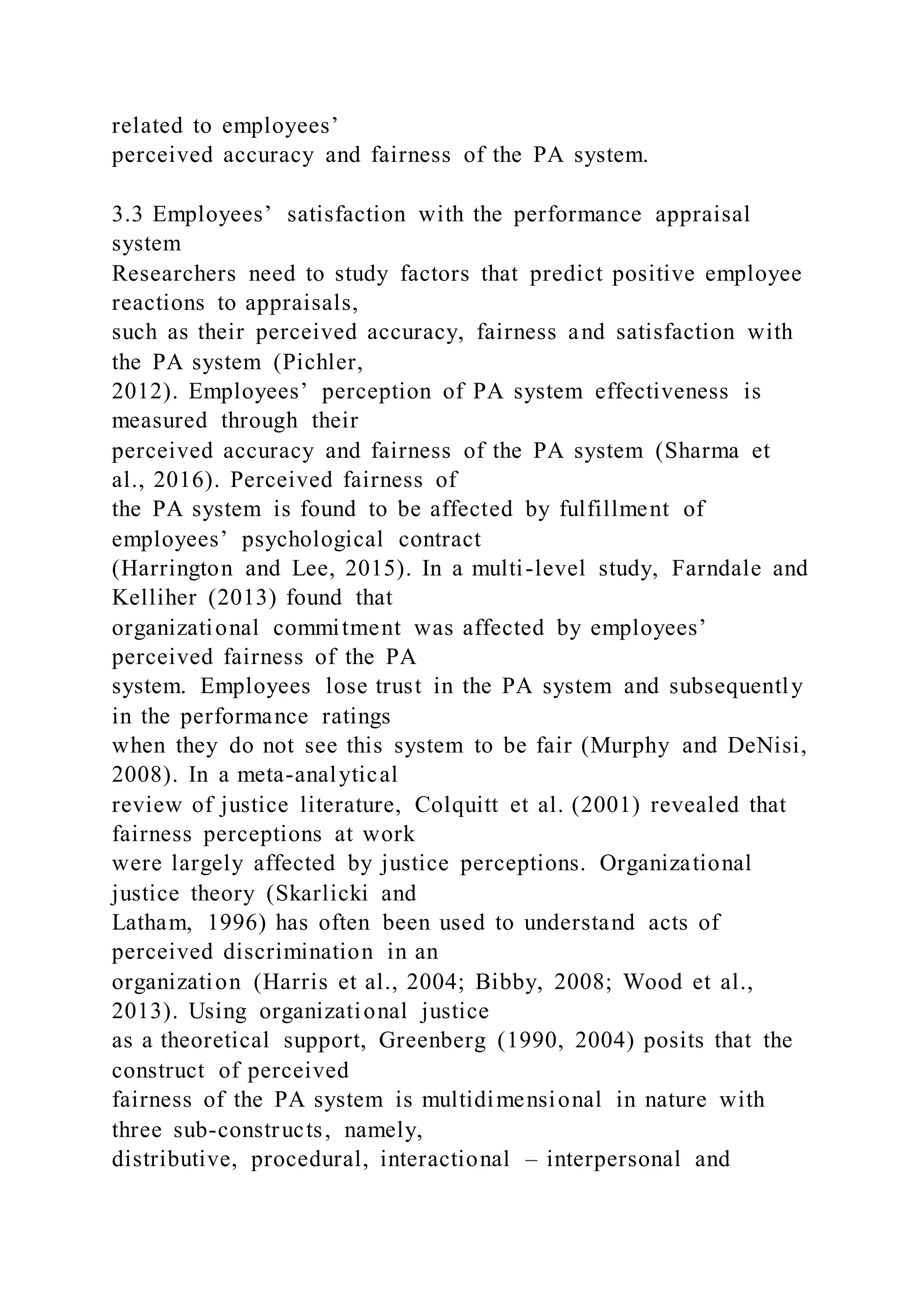

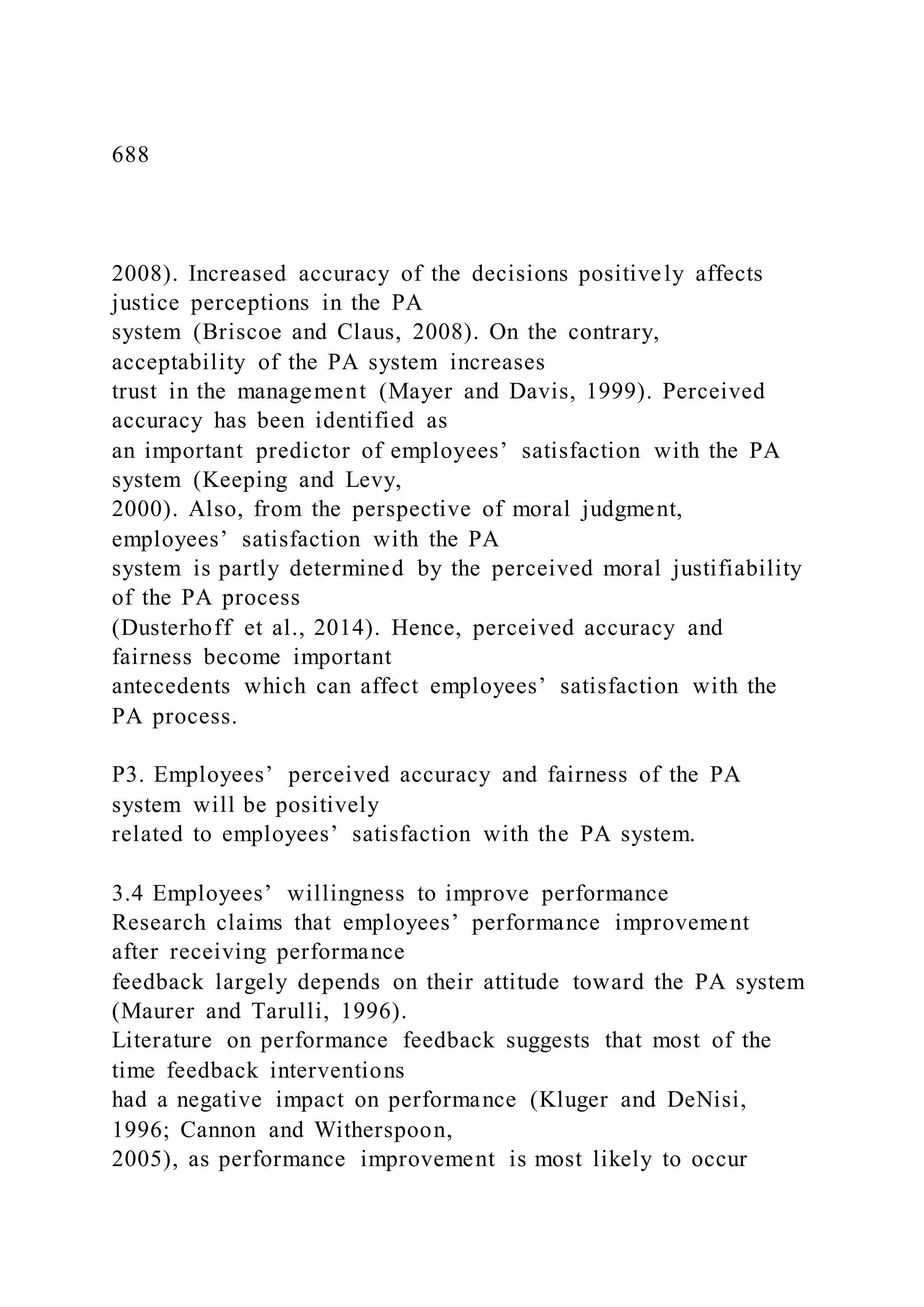
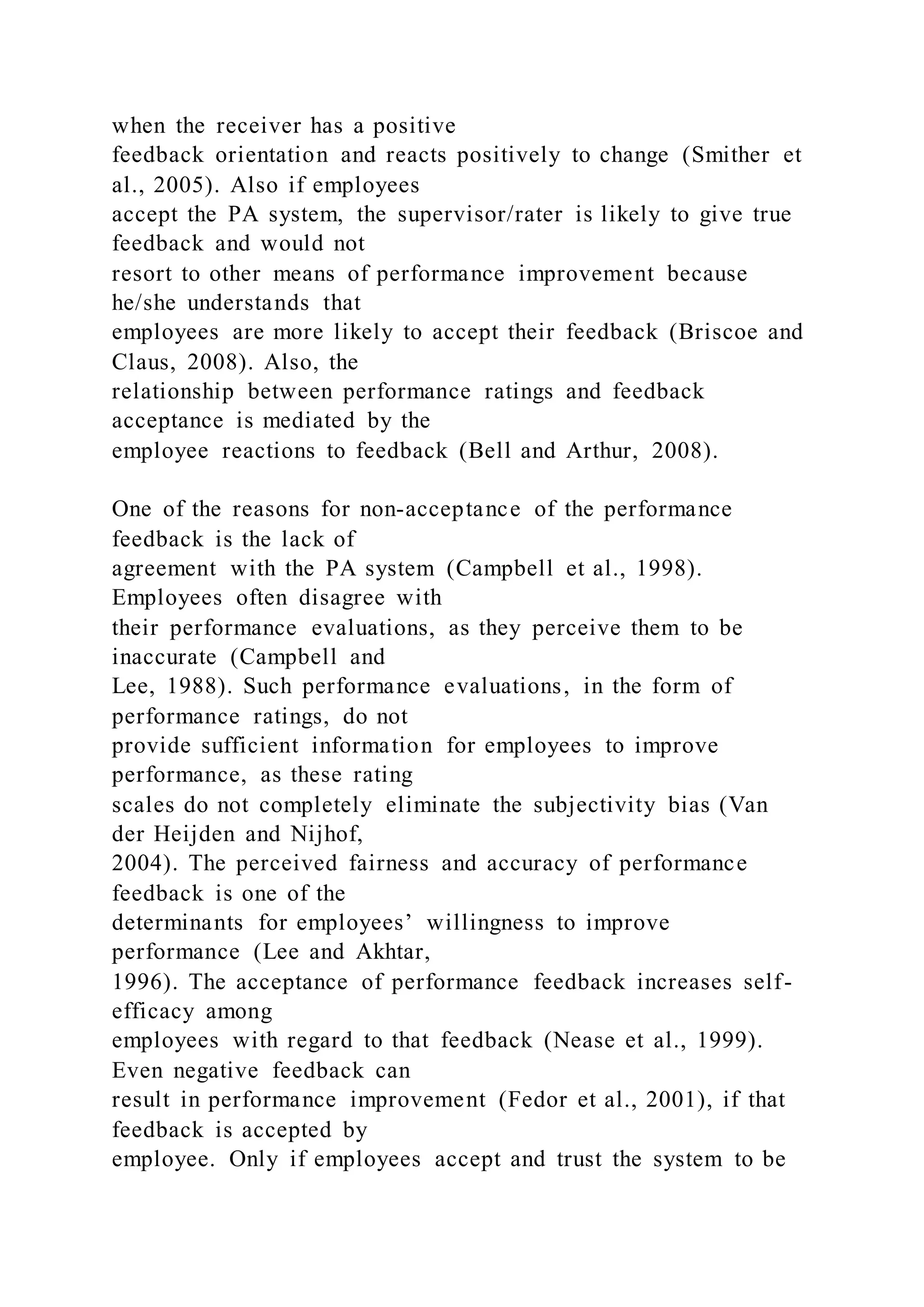
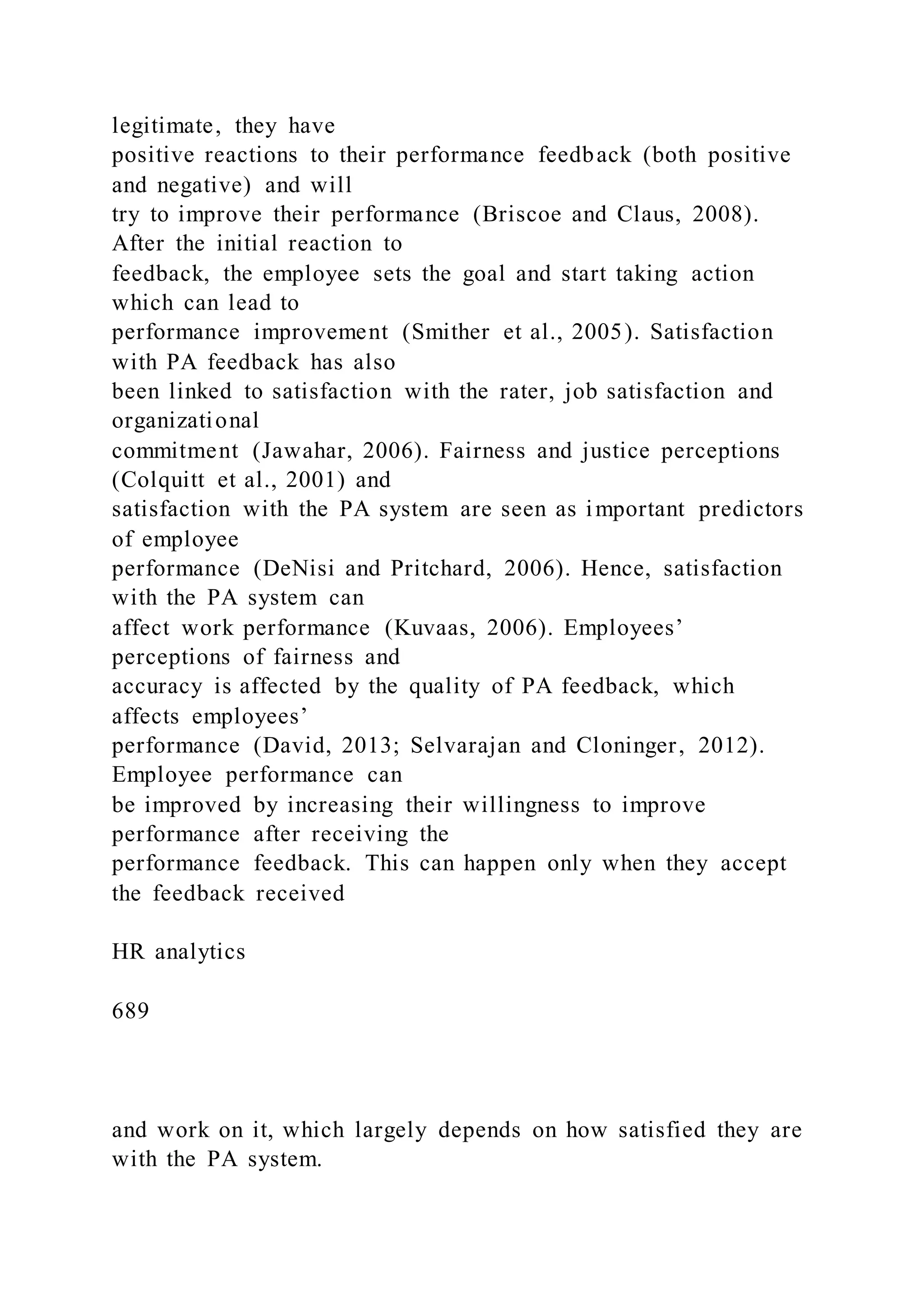
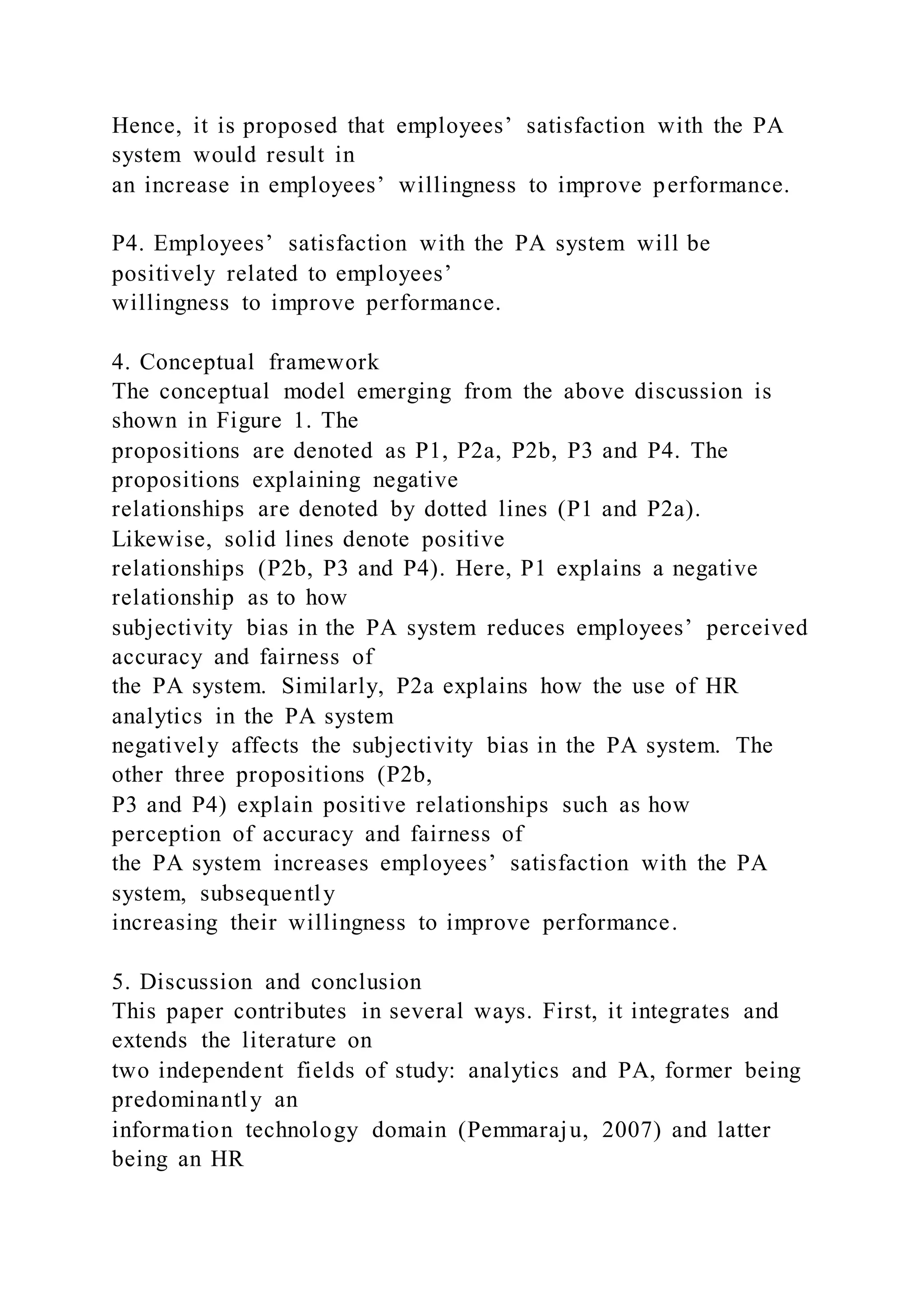
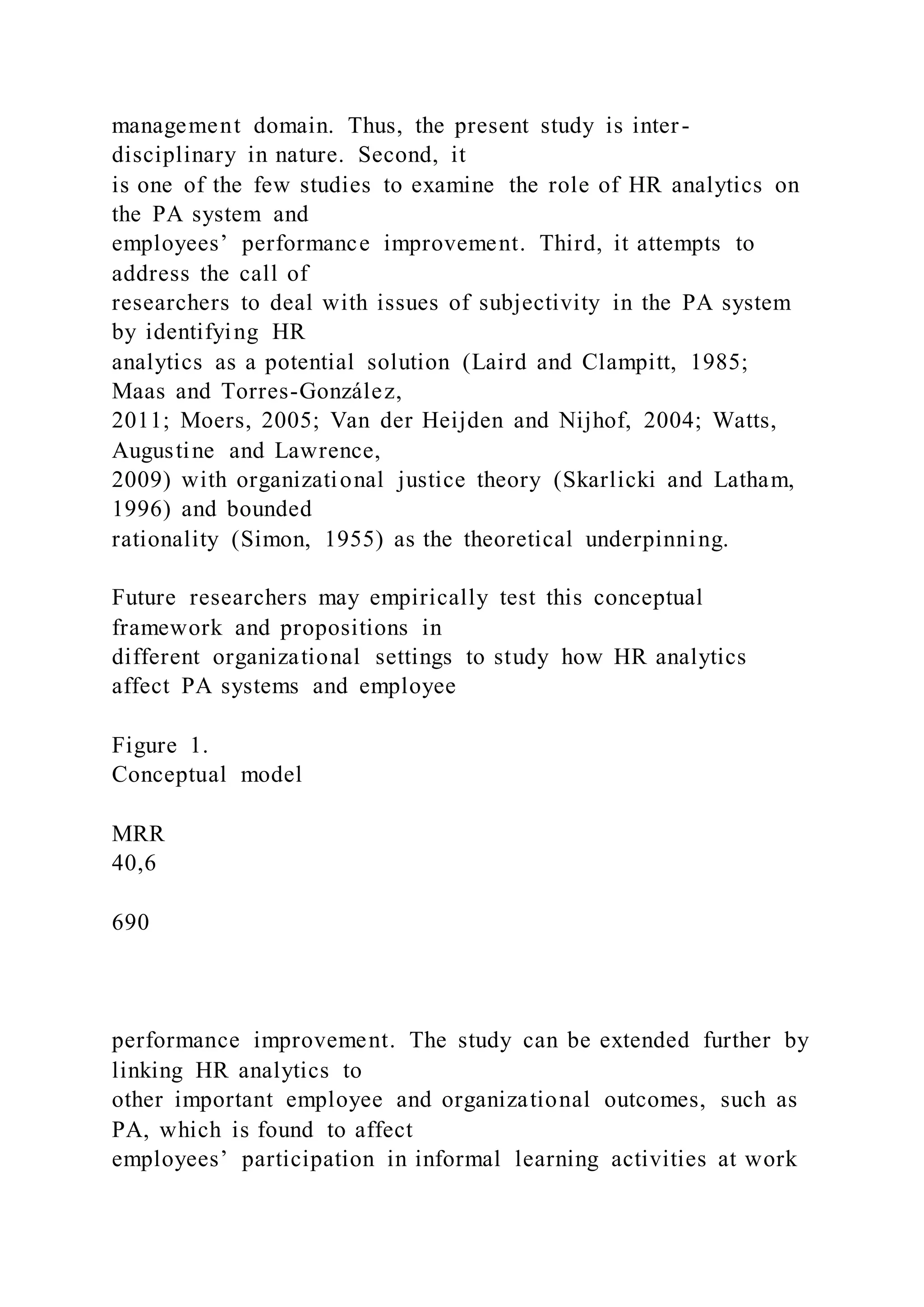
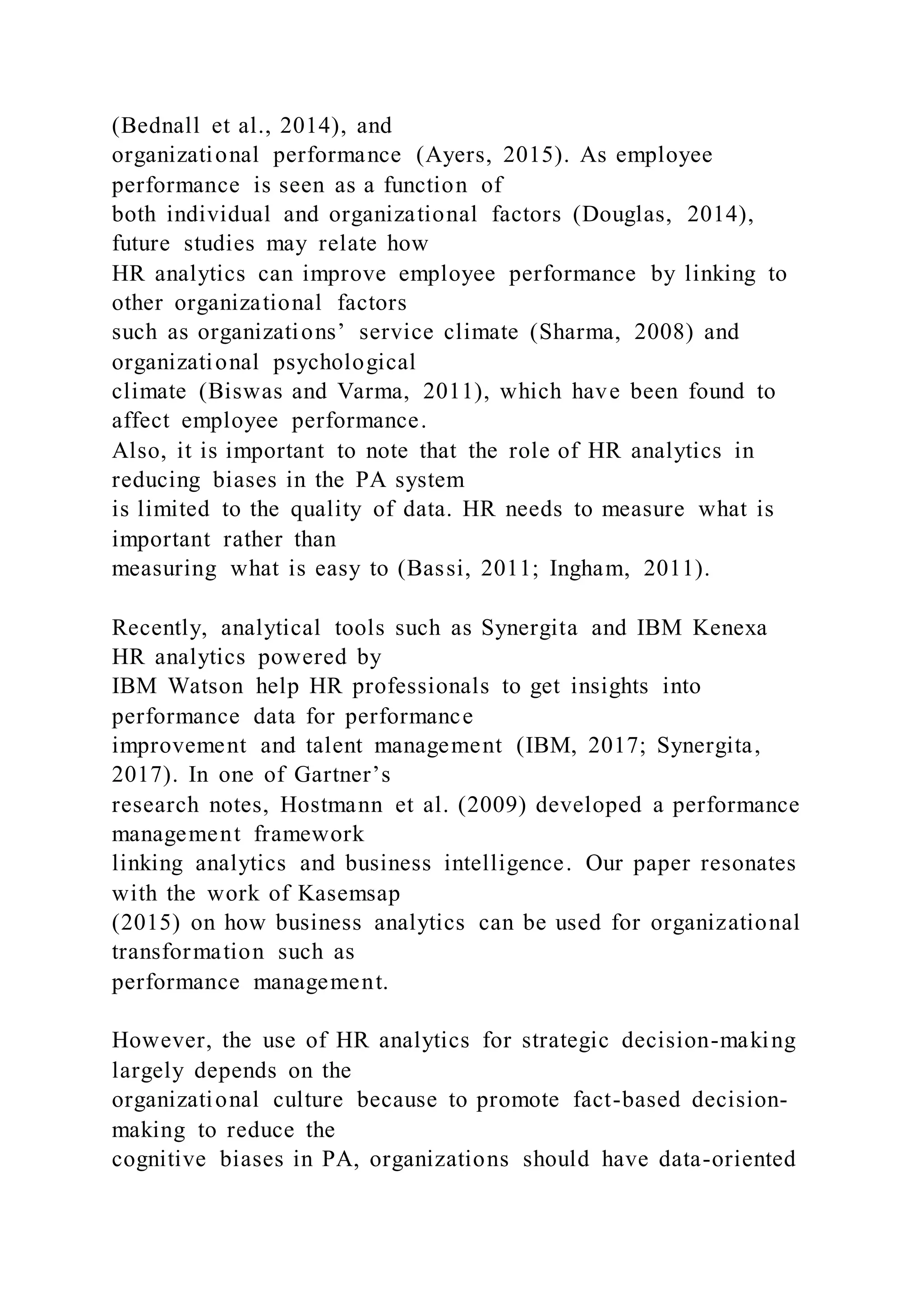
![leadership (LaValle et al.,
2011). Such a data-driven culture may be defined as:
[. . .] a pattern of behaviors and practices by a group of people
who share a belief that having,
understanding and using certain kinds of data and information
plays a critical role in the success
of their organization (Kiron et al., 2013, p. 18).
Based on this culture, organizations may be categorized on their
level of analytical
capability from analytically impaired to analytical competitors
(Davenport and Harris,
2007). DELTA (Data, Enterprise, Leadership, Target and
Analysts) provides a basic
framework for implementing analytics in organizations
(Davenport et al., 2010). Willing
firms which are analytical innovators build a data-oriented
culture by recruiting and
promoting analytical talent (Ransbotham et al., 2015).
To conclude, this paper made an attempt to explore the role of
HR analytics on PA system
and its subsequent impact on employees’ willingness to improve
performance by proposing a
conceptual model with testable propositions. The paper
highlights subjectivity bias in the PA
system as one of the issues that needs to be addressed to
increase its perceived accuracy and
fairness, which in turn affect employees’ satisfaction with the
appraisal system. To do so, HR
analytics was found to be a potential solution by increasing
accuracy and objectivity in the
appraisal process with the use of sophisticated data analysis
tools. Along with implications for
both practitioners and researchers in the field of performance](https://image.slidesharecdn.com/hranalyticsandperformanceappraisalsystemaconceptual-220921185119-0b4da917/75/HR-analytics-and-performanceappraisal-systemA-conceptual-21-2048.jpg)
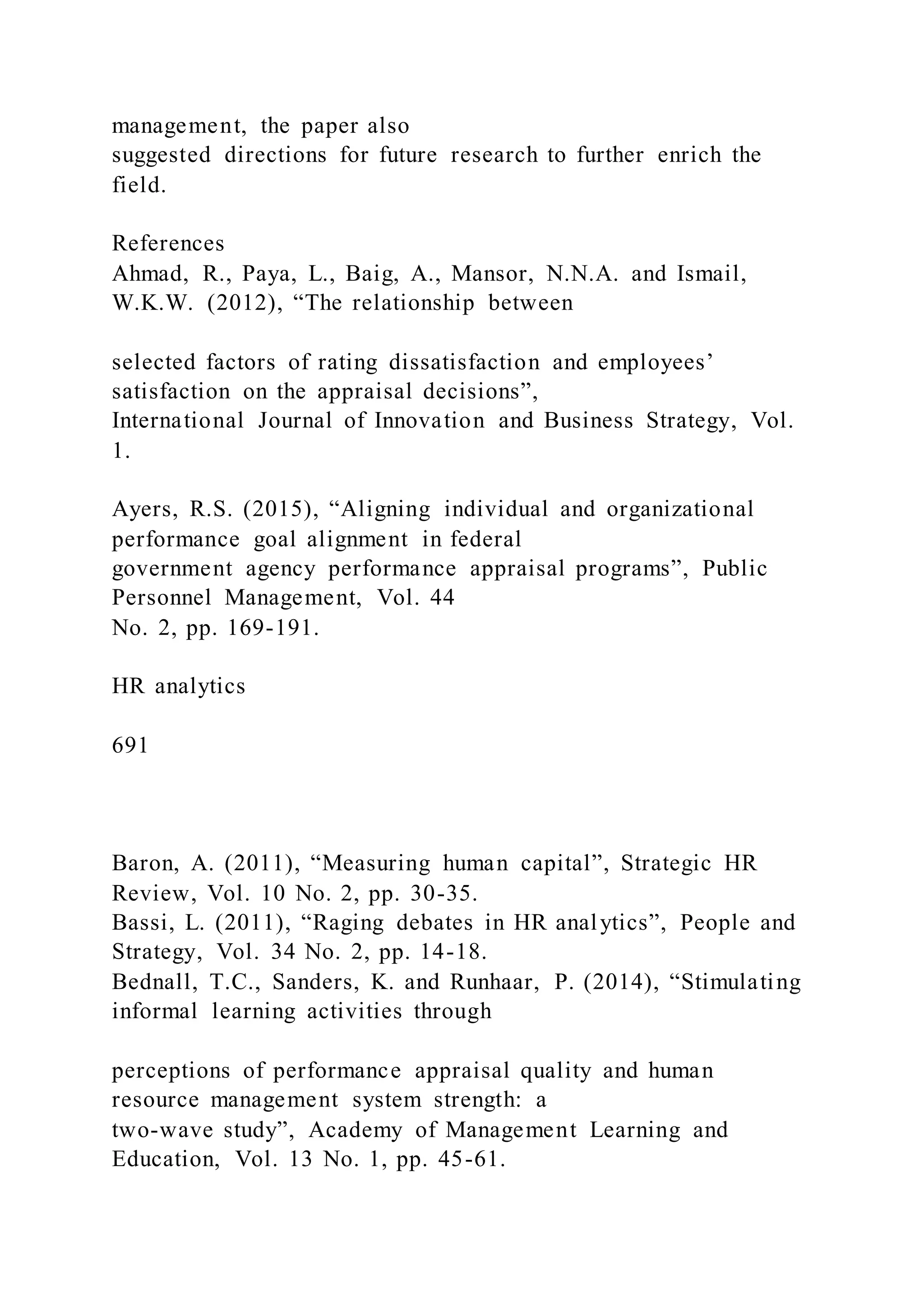
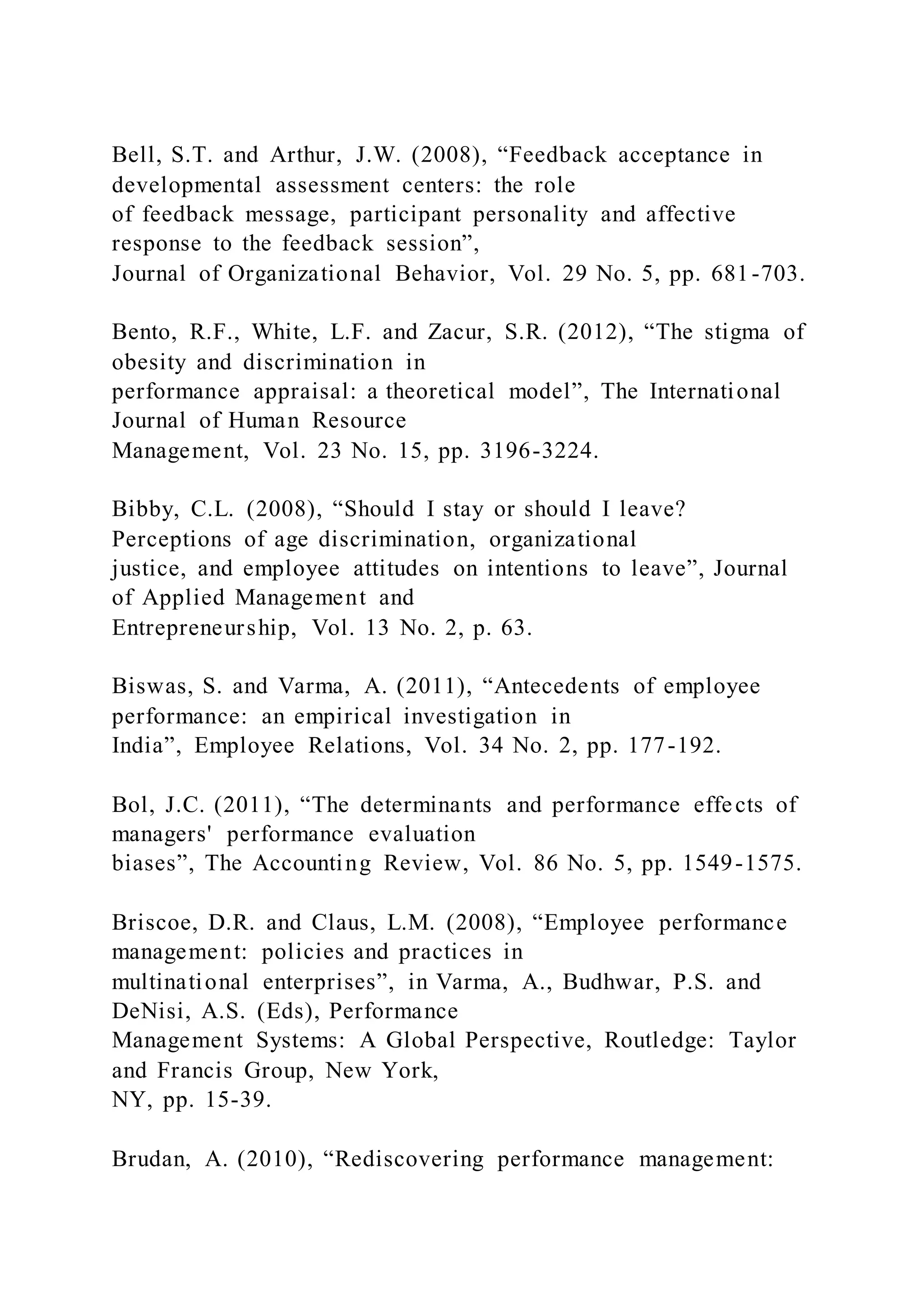
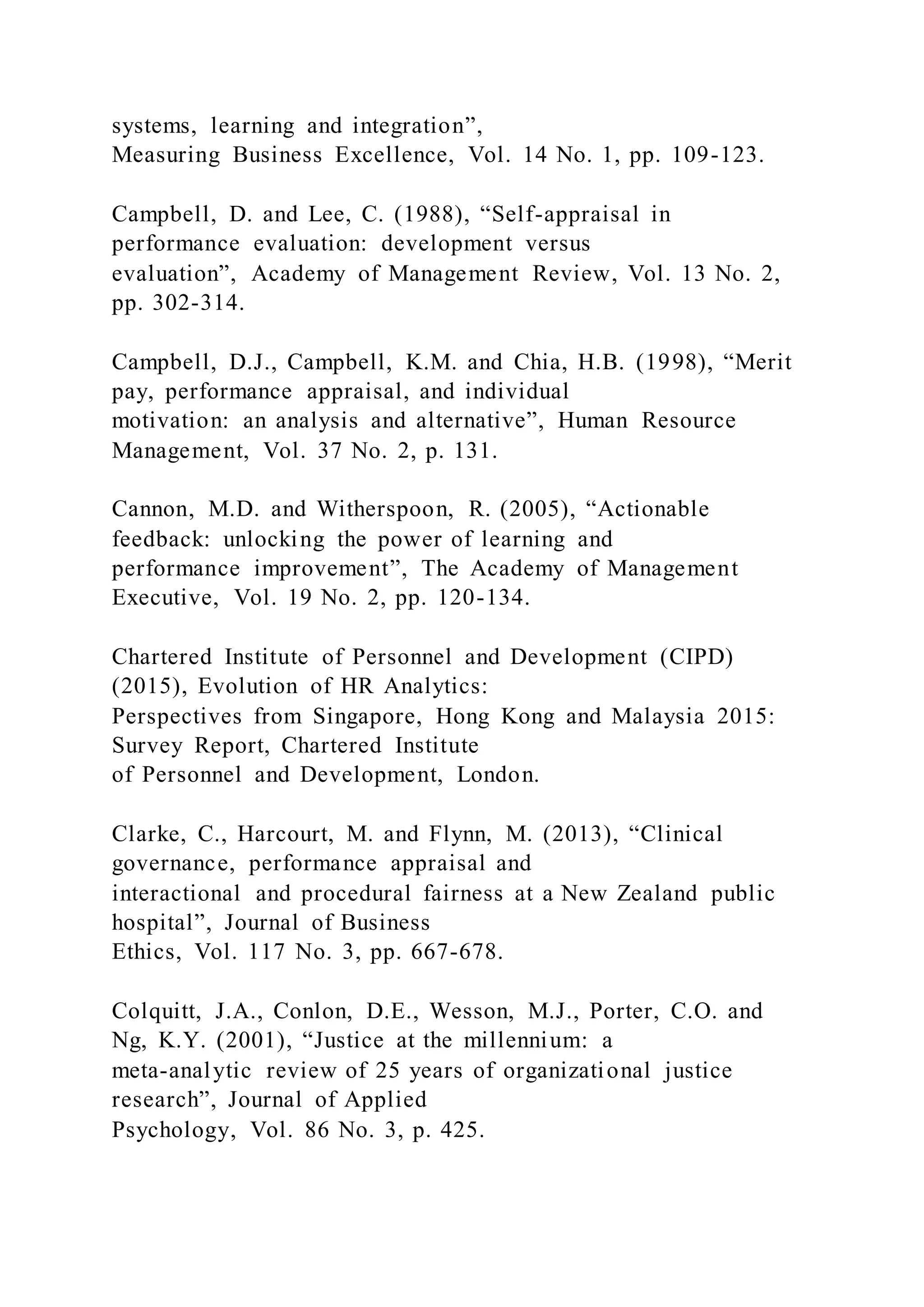

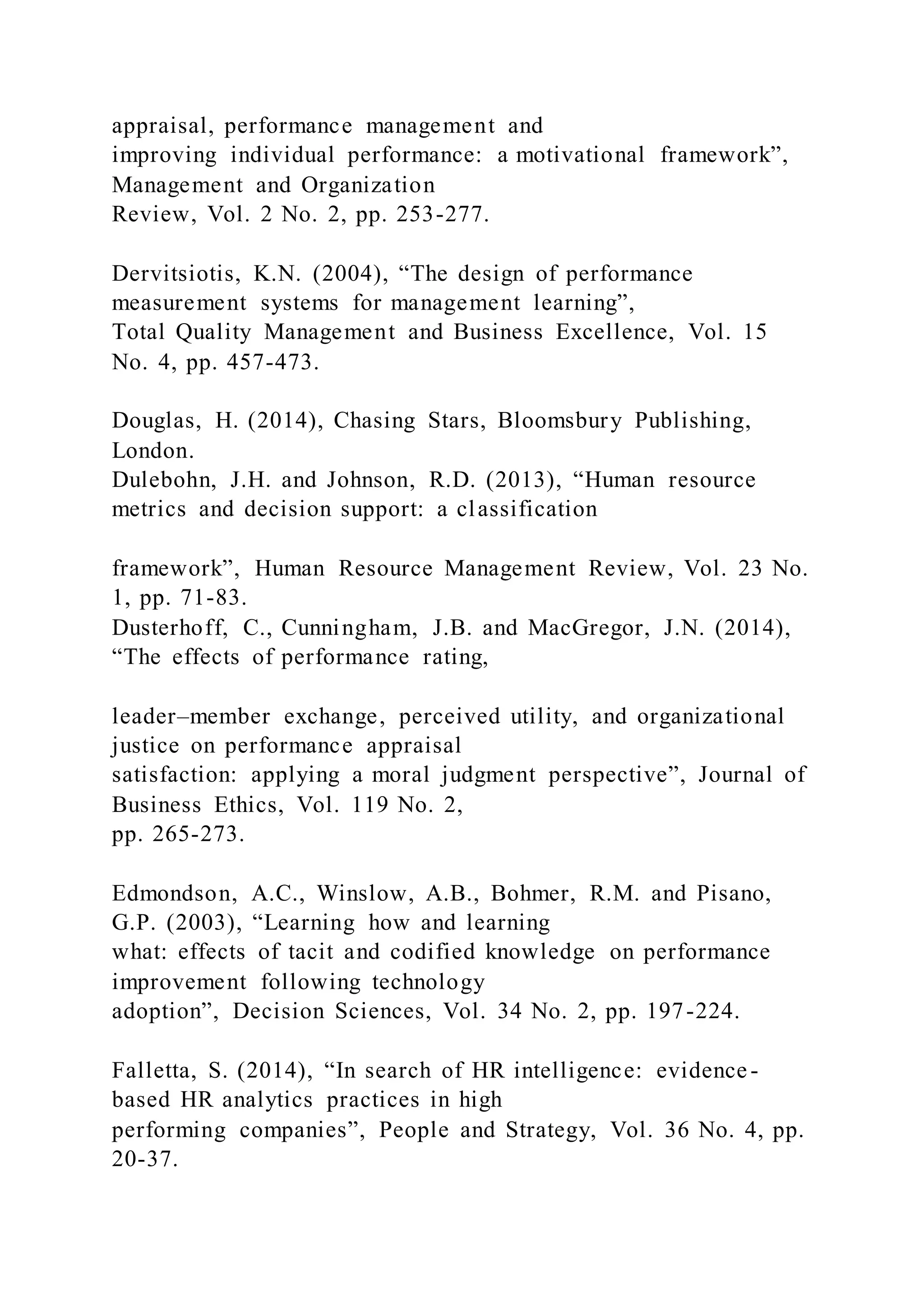

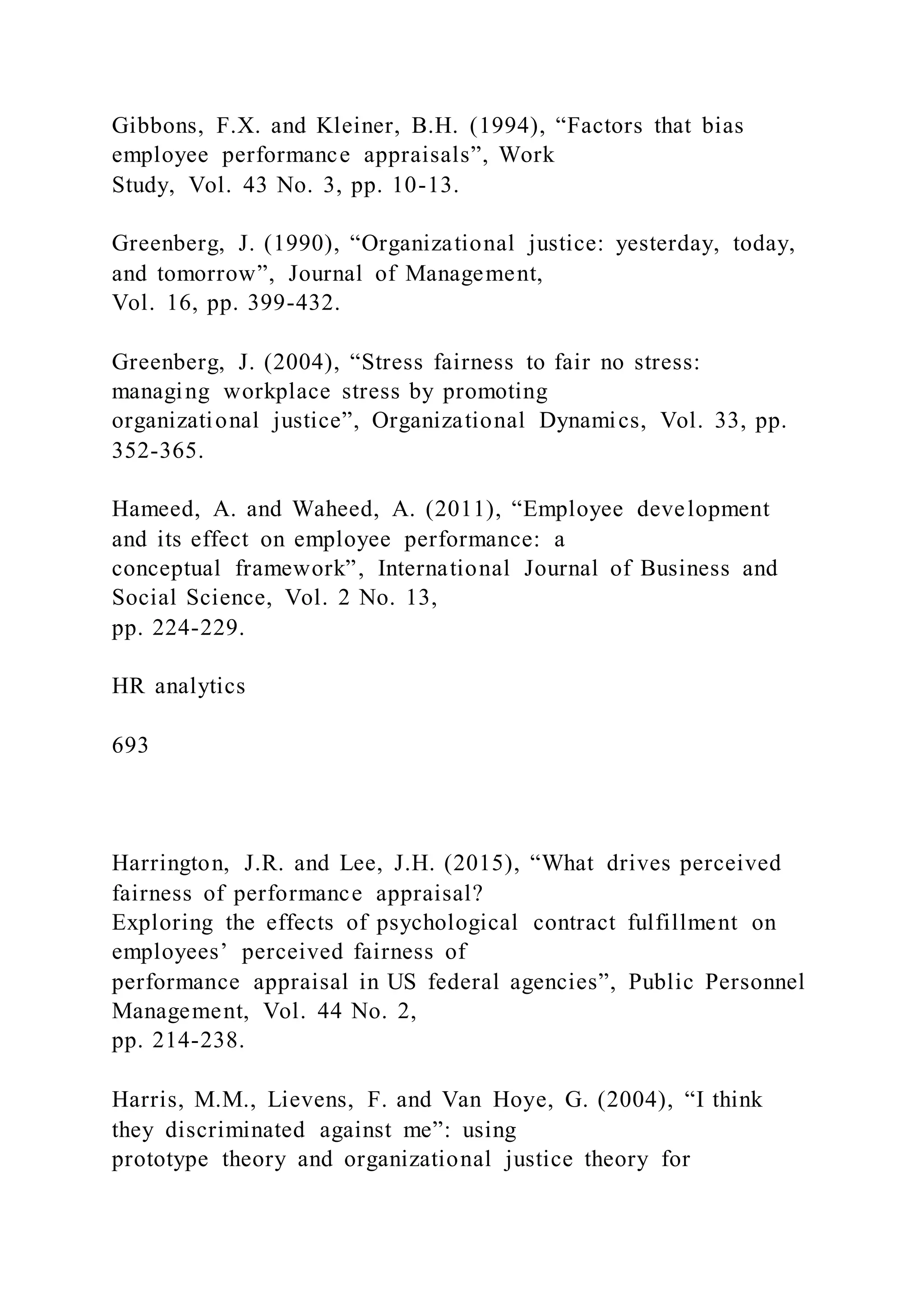
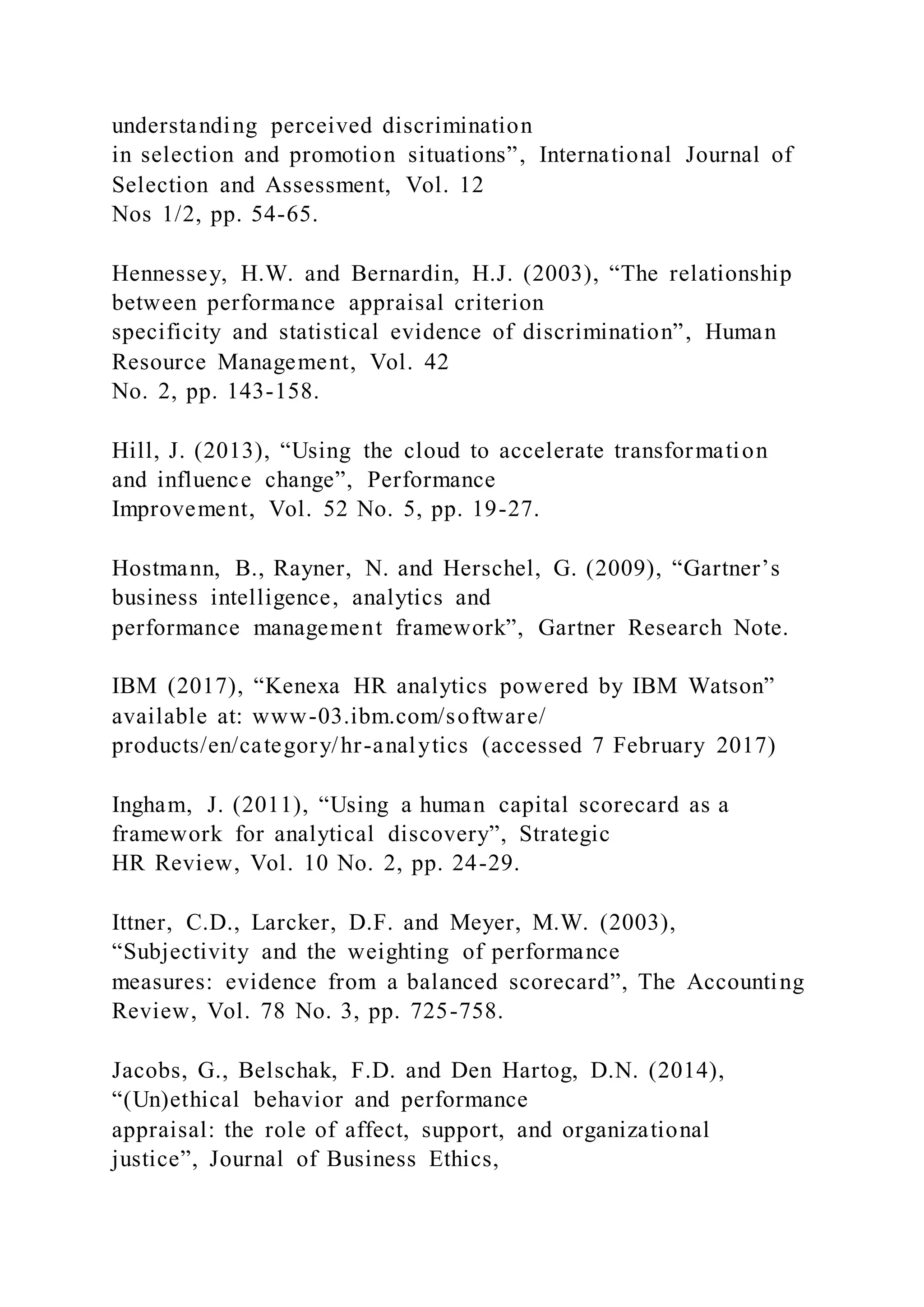

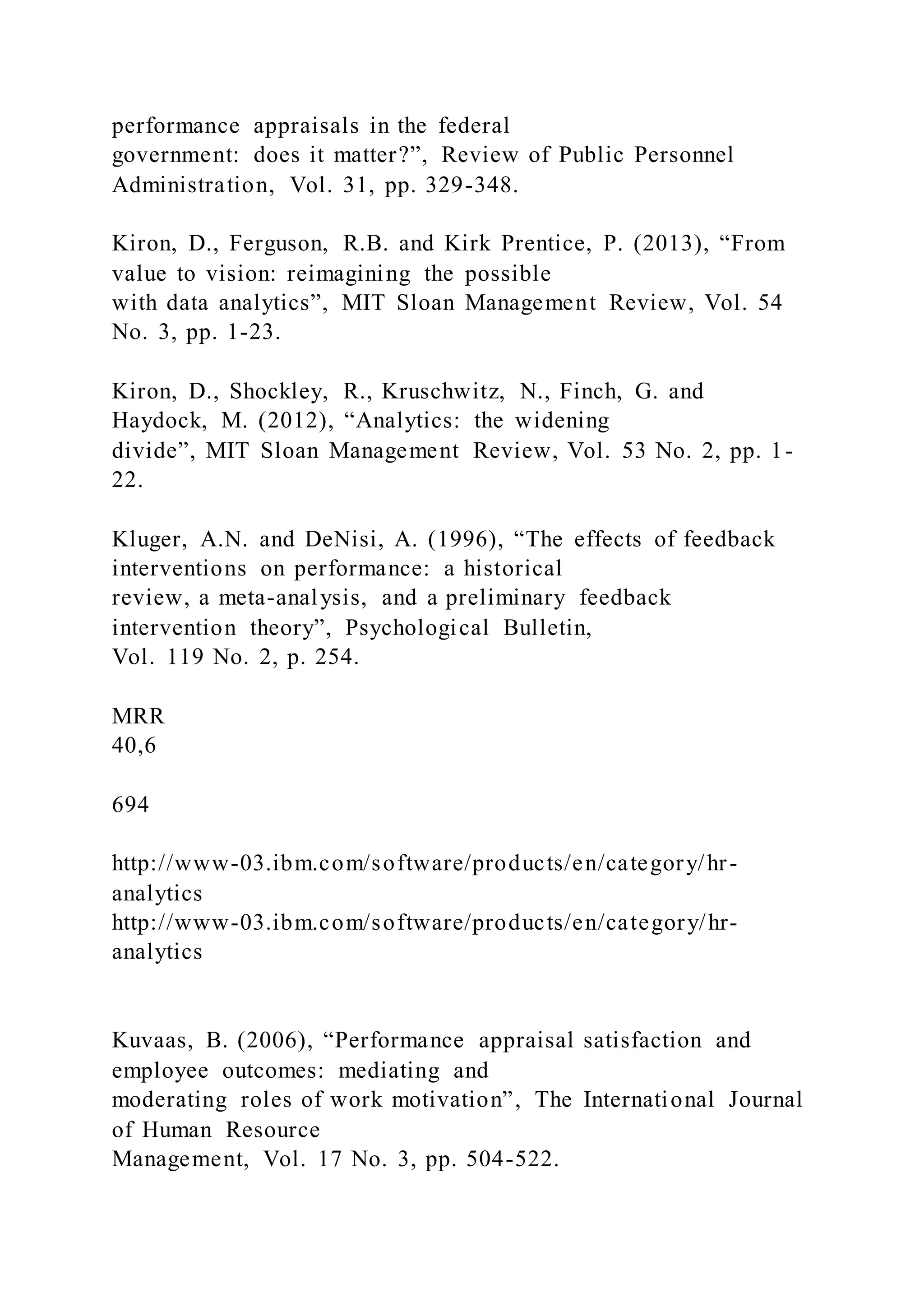
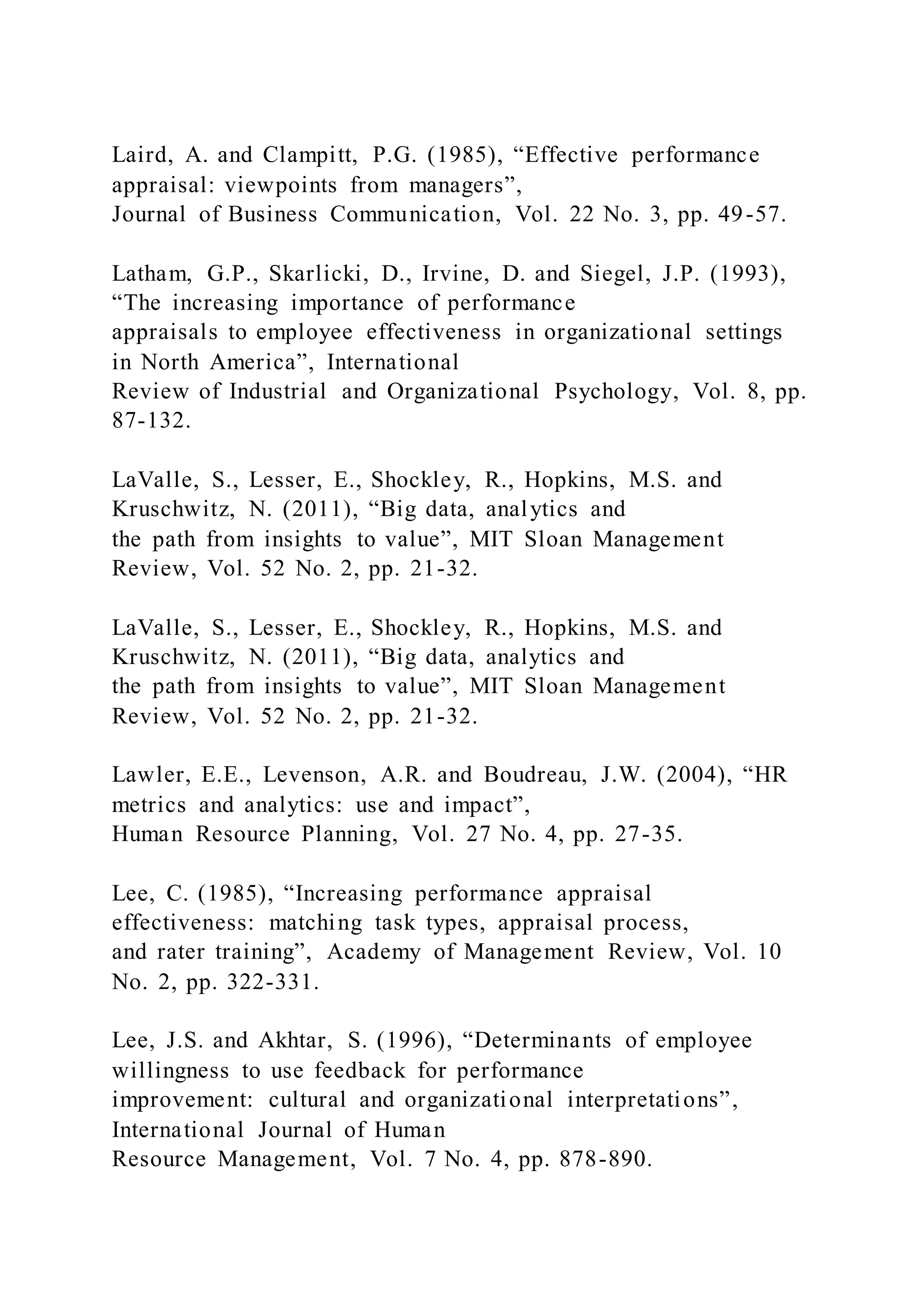
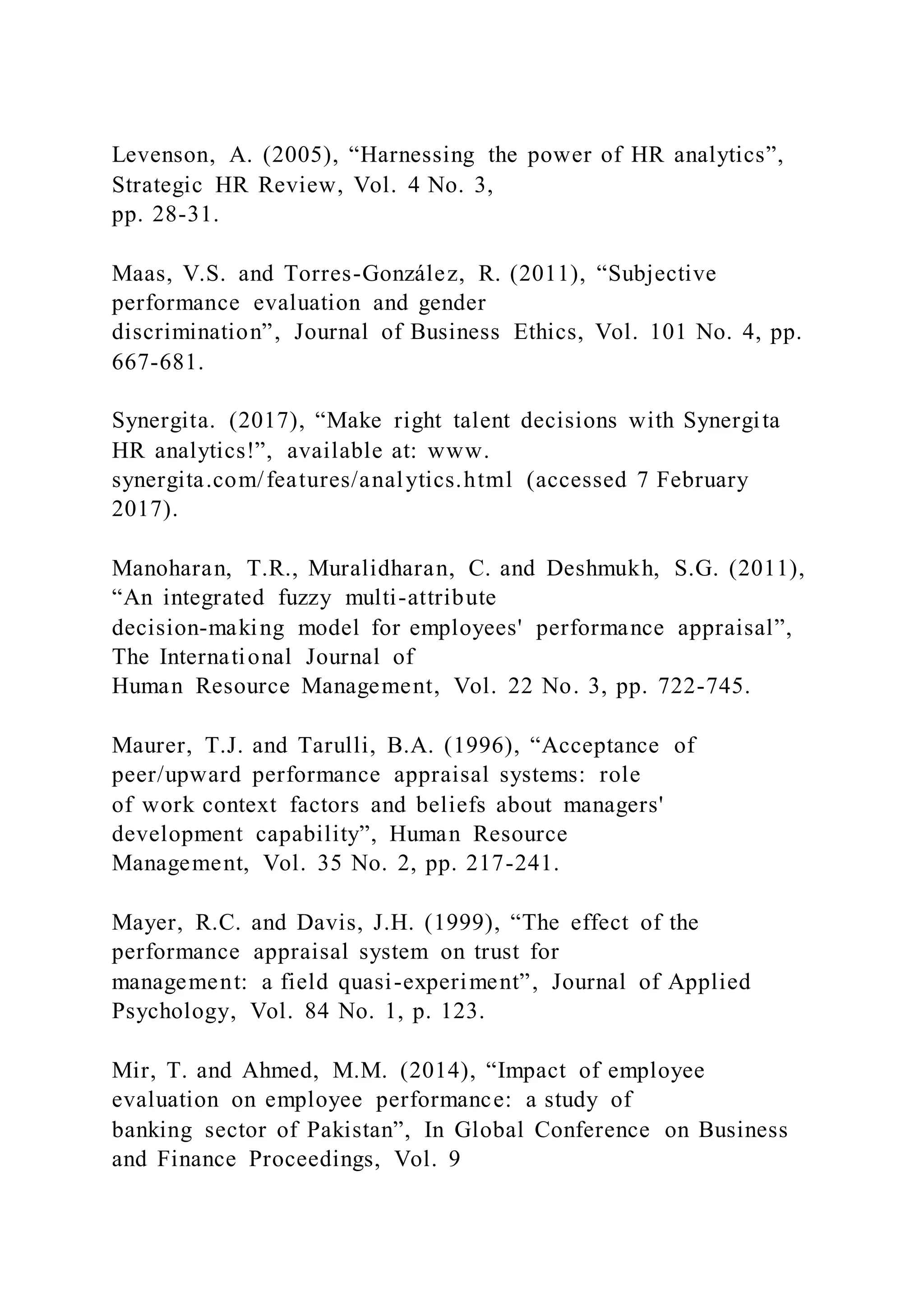

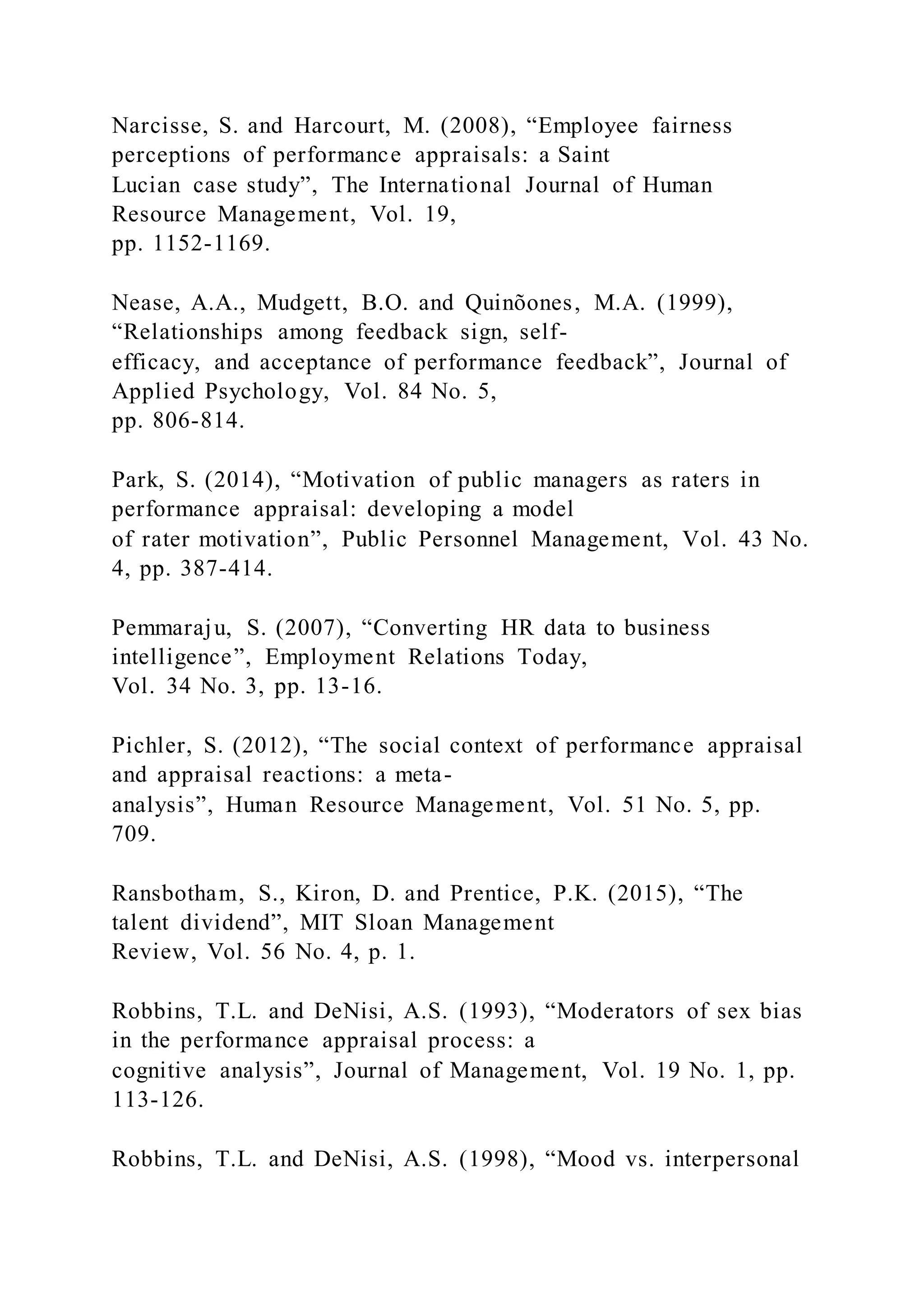
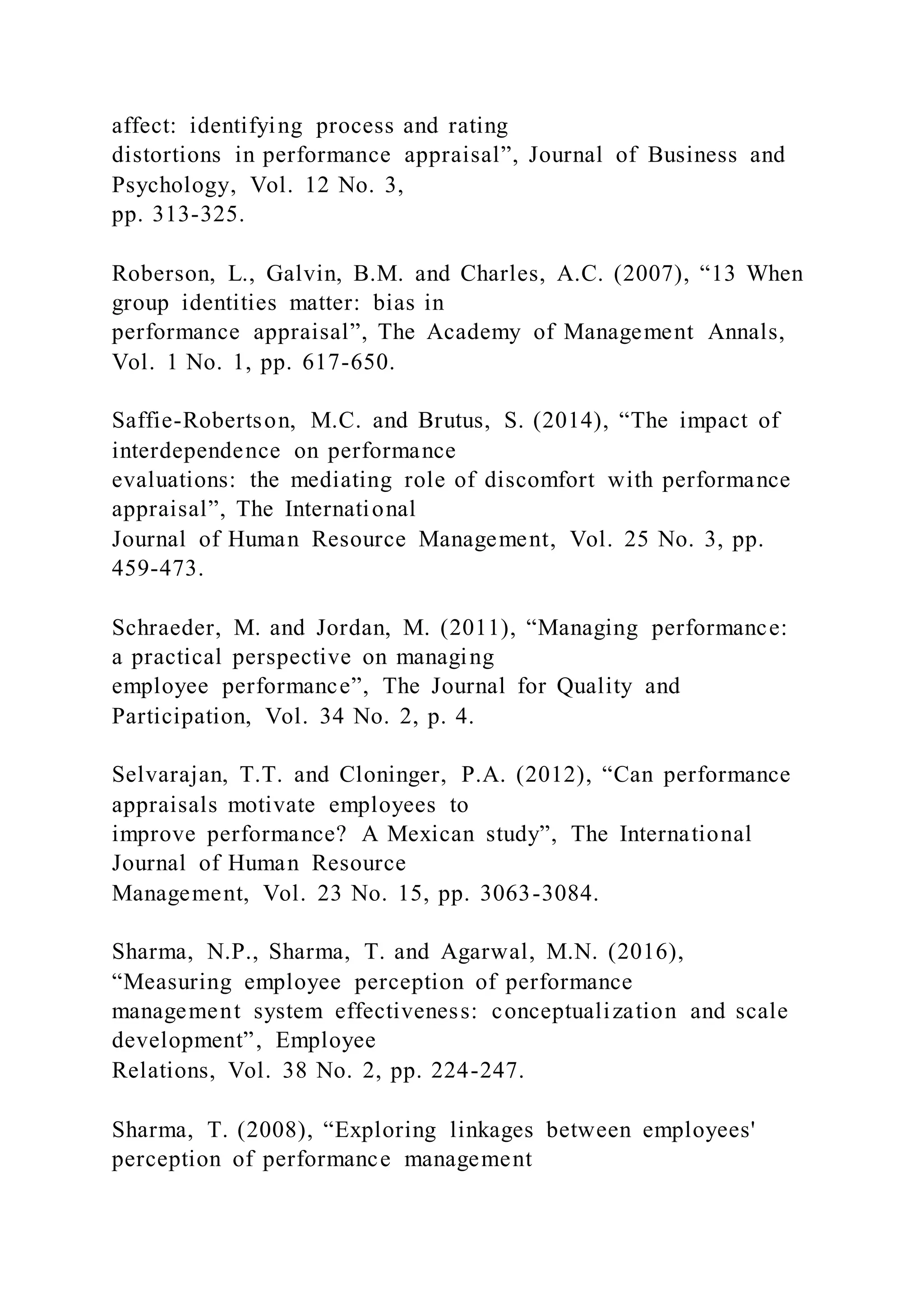

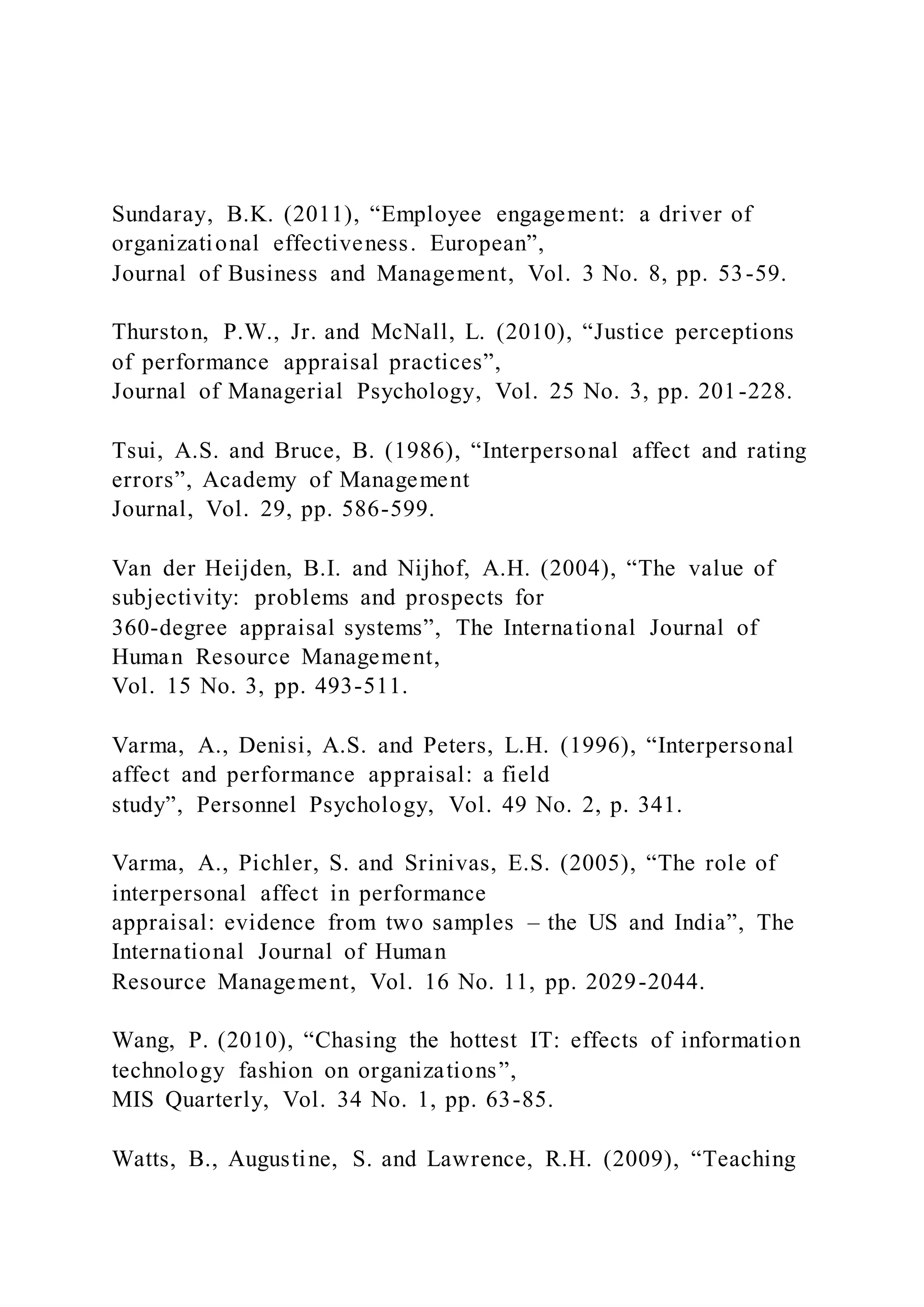
![quality improvement in the midst of
performance measurement pressures: mixed messages?”,
Management in Healthcare, Vol. 18
No. 3, pp. 209-216.
Wilson, K.Y. (2010), “An analysis of bias in supervisor
narrative comments in performance appraisal”,
Human Relations, Vol. 63 No. 12, pp. 1903-1933.
Wong, Y.T., Wong, Y.W. and Wong, C.S. (2015), “An
integrative model of turnover intention:
antecedents and their effects on employee performance in
Chinese joint ventures”, Journal of
Chinese Human Resource Management, Vol. 6 No. 1, pp. 71-90.
Wood, S., Braeken, J. and Niven, K. (2013), “Discrimination
and well-being in organizations: testing the
differential power and organizational justice theories of
workplace aggression”, Journal of
Business Ethics, Vol. 115 No. 3, pp. 617-634.
Zhang, H. and Agarwal, N.C. (2009), “The mediating roles of
organizational justice on the relationships
between HR practices and workplace outcomes: an investigation
in china”, The International
Journal of Human Resource Management, Vol. 20 No. 3, pp.
676-693.
Further reading
Greenberg, J. (1986), “Determinants of perceived fairness of
performance evaluation”, Journal of Applied
Psychology, Vol. 71, pp. 340-342.
Corresponding author
Anshu Sharma can be contacted at: [email protected]](https://image.slidesharecdn.com/hranalyticsandperformanceappraisalsystemaconceptual-220921185119-0b4da917/75/HR-analytics-and-performanceappraisal-systemA-conceptual-39-2048.jpg)
![For instructions on how to order reprints of this article, please
visit our website:
www.emeraldgrouppublishing.com/licensing/reprints.htm
Or contact us for further details: [email protected]
HR analytics
697
mailto:[email protected]HR analytics and performance appraisal
system1. Introduction2. Research question3. Theoretical
development3.1 Performance appraisal system and issues of
subjectivity bias3.2 HR analytics and performance appraisal
system3.3 Employees’ satisfaction with the performance
appraisal system3.4 Employees’ willingness to improve
performance4. Conceptual framework5. Discussion and
conclusionReferences
Research and Report Writing
In the previous class assessment, I chose language and culture
as the research area I would like to do. Language and culture
are an area of interest. As I had discussed earlier, language and
culture are two different things. Language is a method/
principal that human beings use during communication. Culture
is basically the norms and customs of a particular group of
people or a society. Language is one of the elements in a
culture. The connection language and culture are intertwined.
Language is a key thing in distinguishing a particular group of
people. Language is also the key point of accessing any other
culture. If you start learning another language, it means that you
are getting attached to that particular culture.
The main objective of this paper is to find out the relationship
between culture and language. There are different types of
relationships between the both. According to (Kim, 2018) There
are different types of communication within a culture or rather](https://image.slidesharecdn.com/hranalyticsandperformanceappraisalsystemaconceptual-220921185119-0b4da917/75/HR-analytics-and-performanceappraisal-systemA-conceptual-40-2048.jpg)
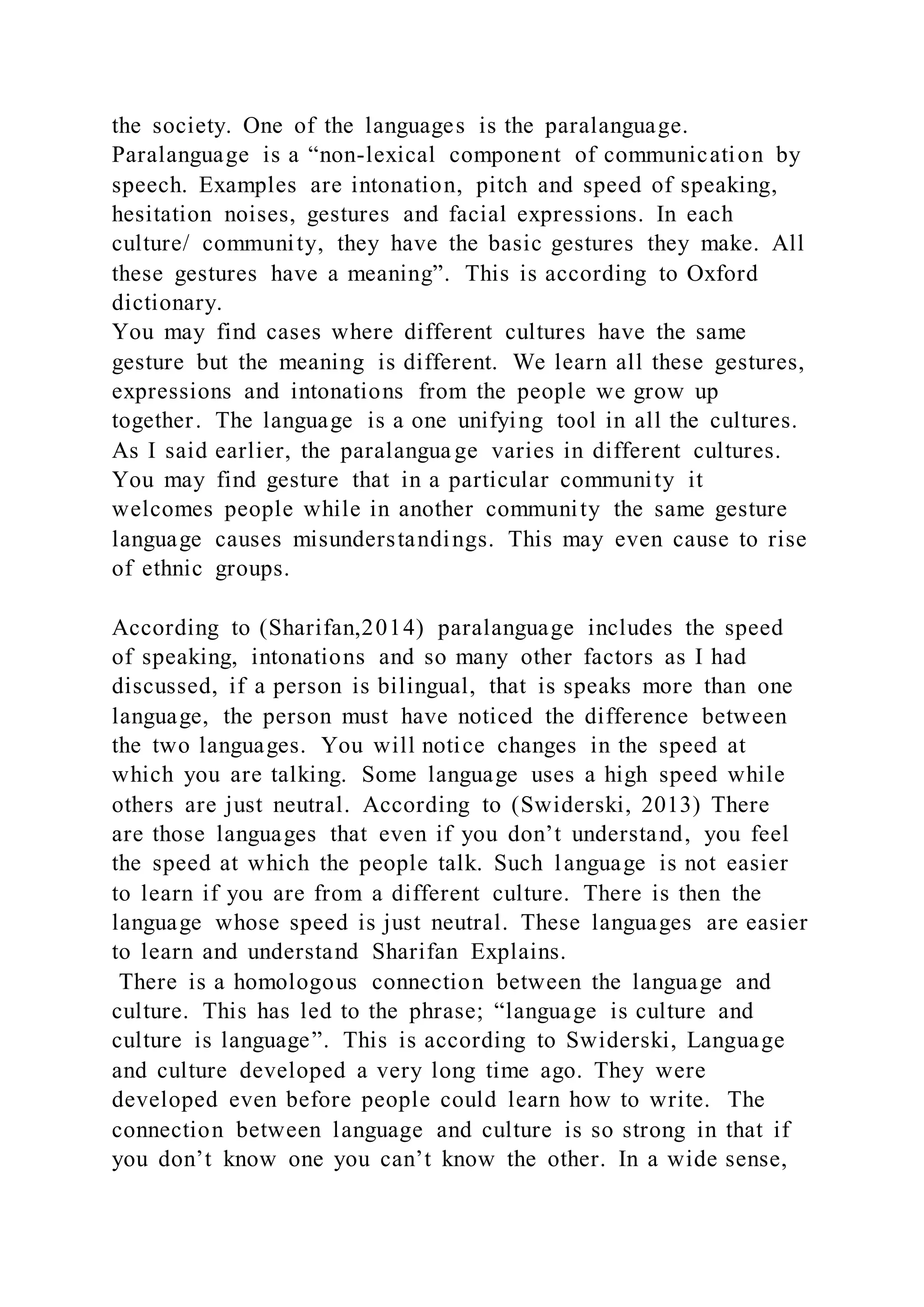
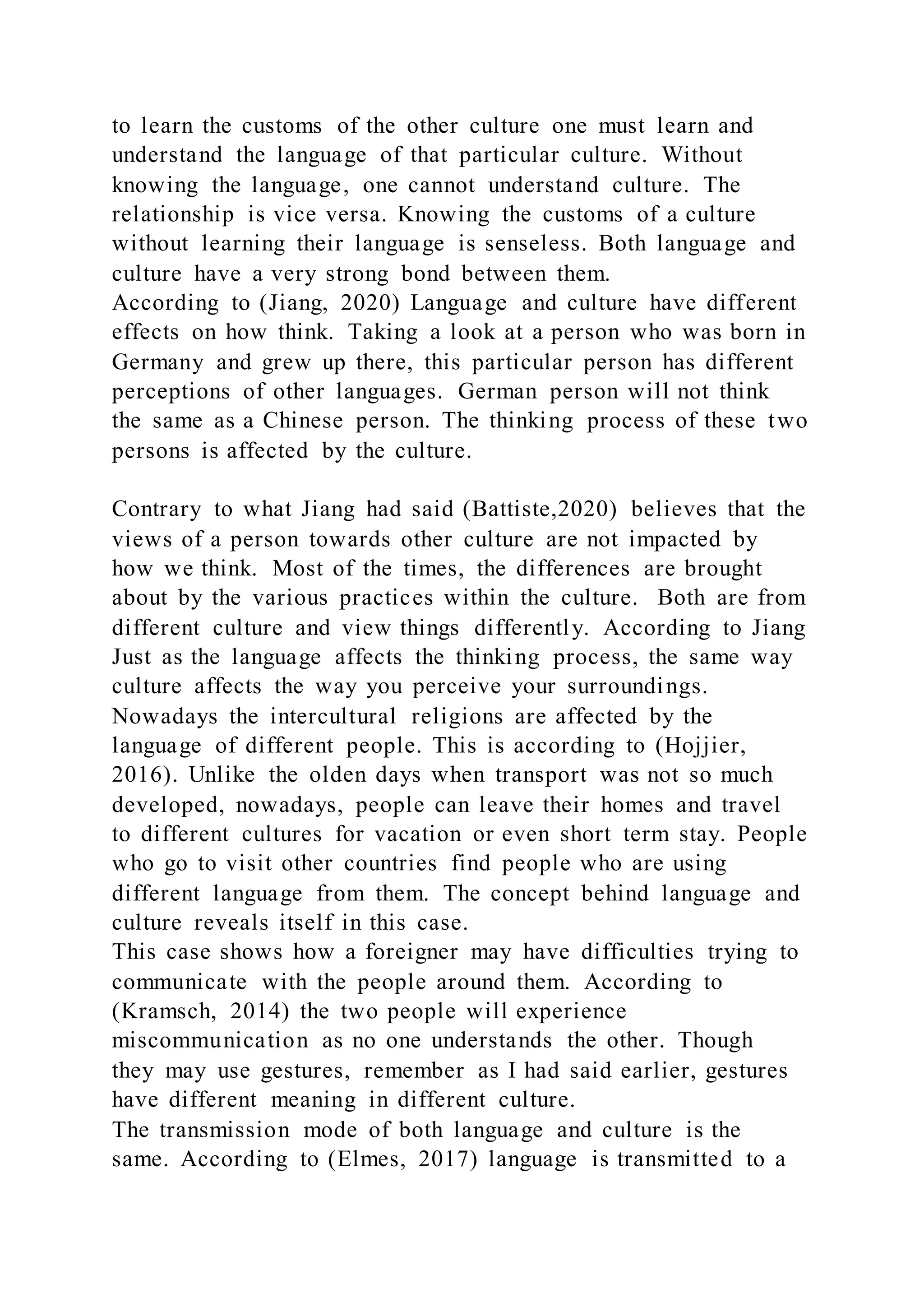

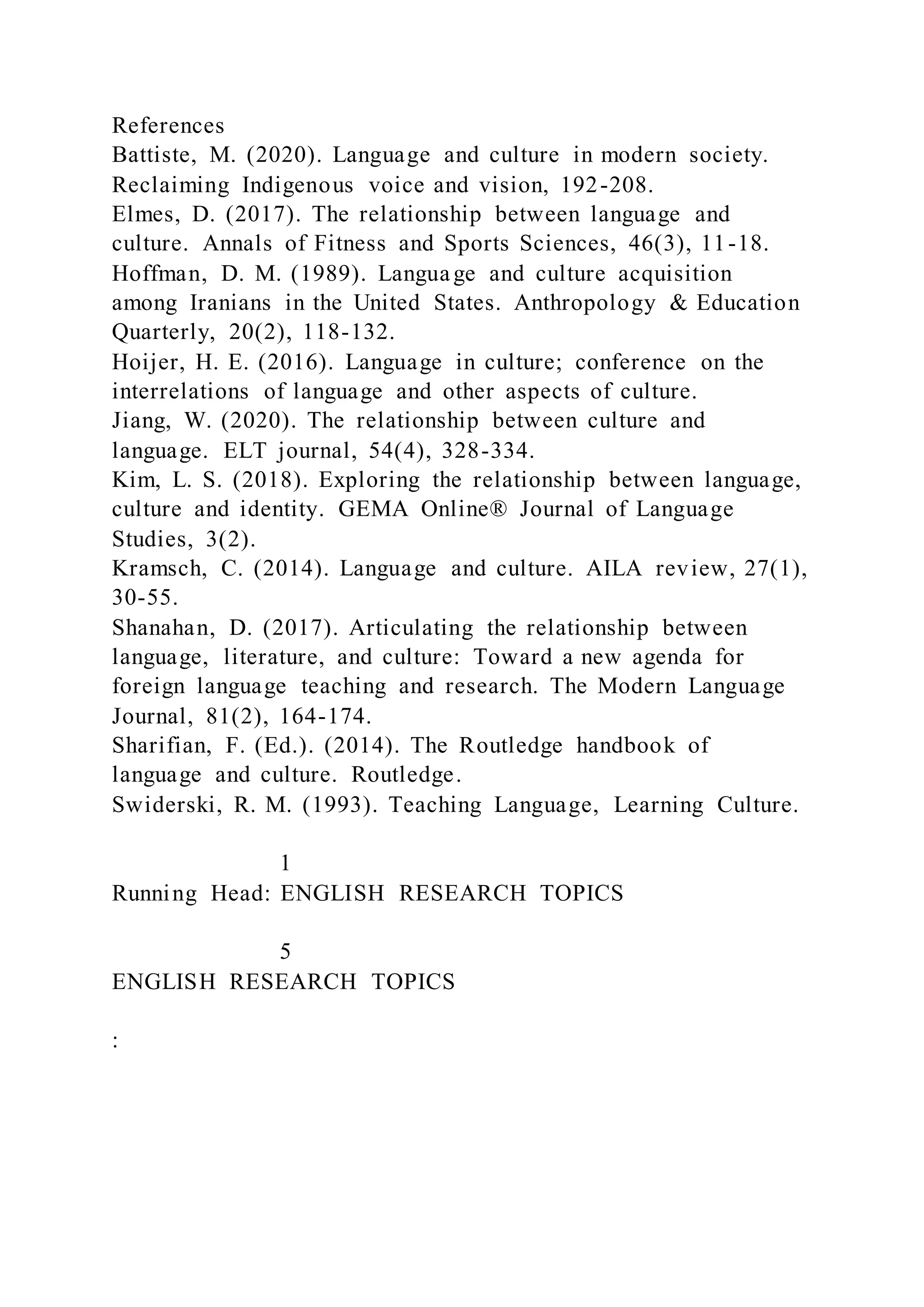
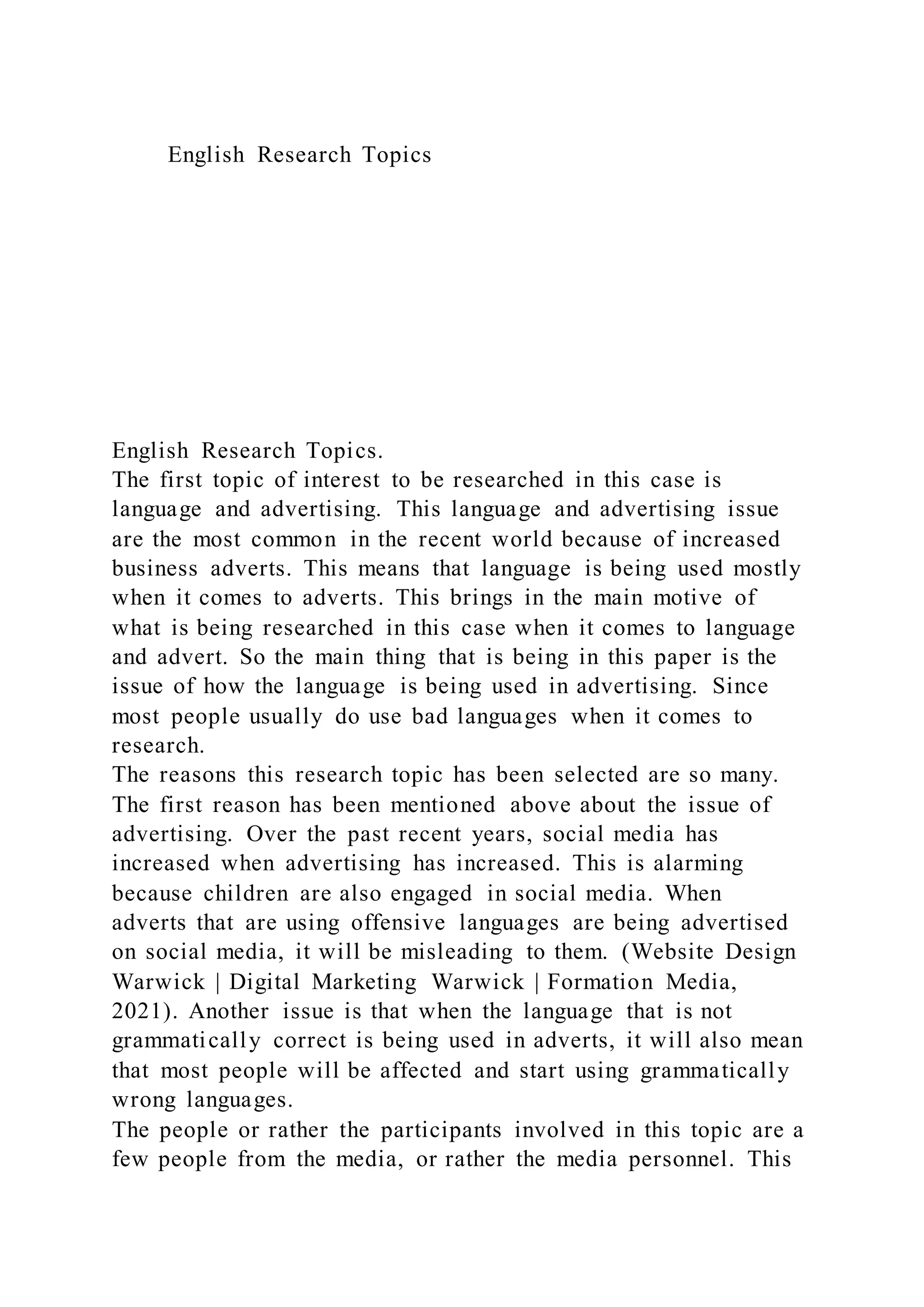
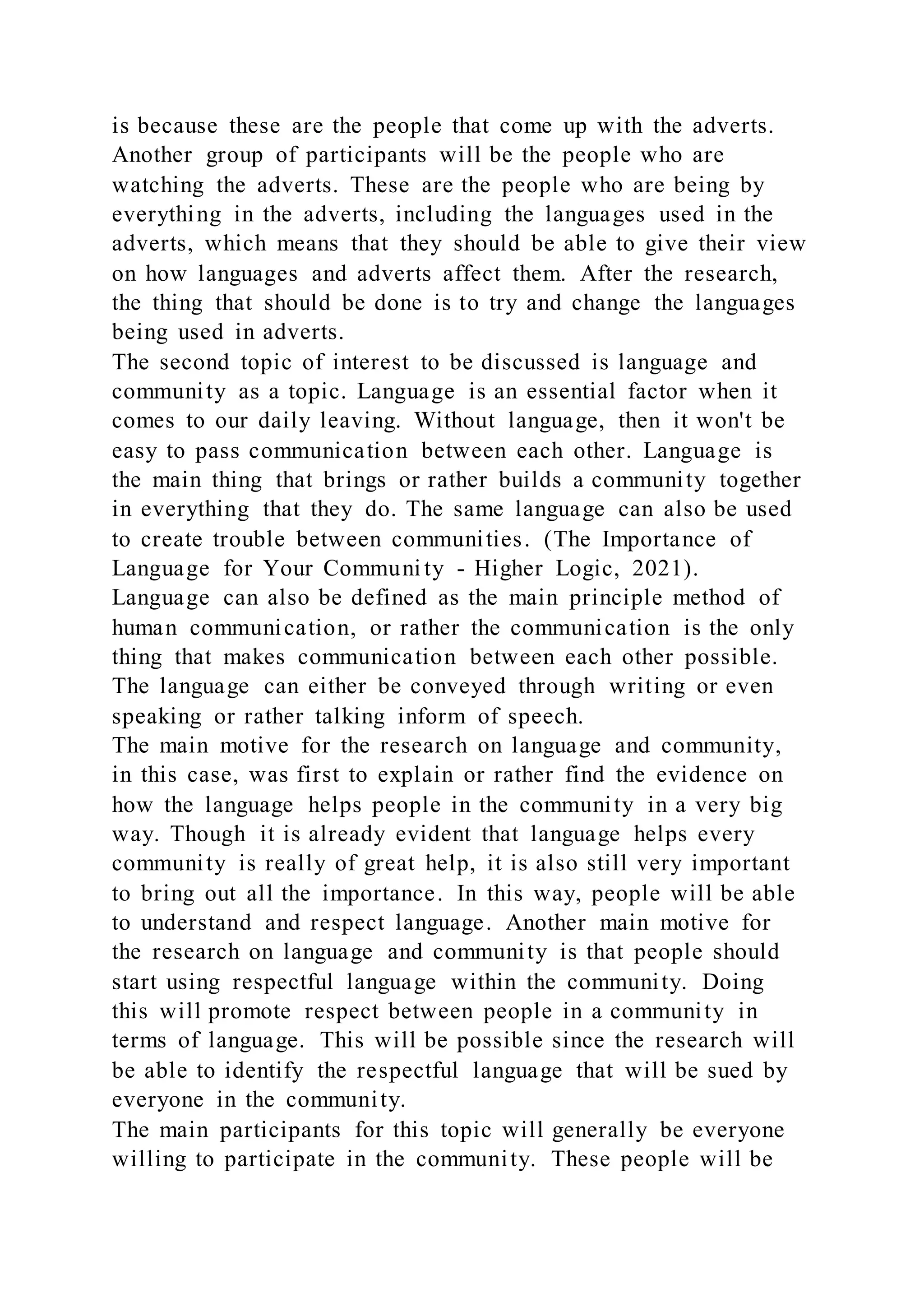
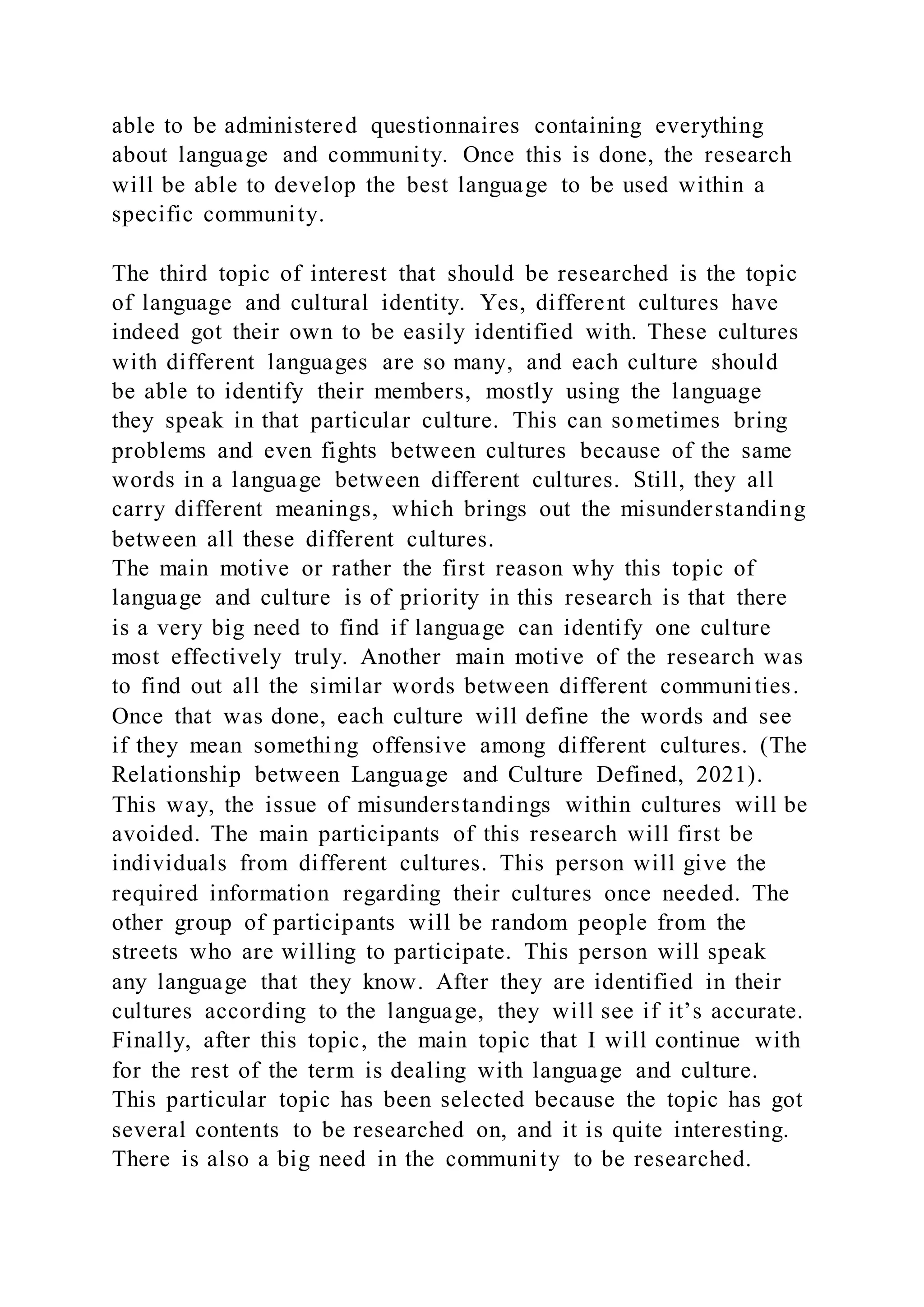
![Reference
Formation Media. 2021. Website Design Warwick | Digital
Marketing Warwick | Formation Media. [online] Available at:
<https://formationmedia.co.uk/blog/language-in-advertising-
understanding-its-use/> [Accessed 17 January 2021].
Higher Logic. 2021. The Importance Of Language For Your
Community - Higher Logic. [online] Available at:
<https://www.higherlogic.com/blog/the-importance-of-
language-for-your-
community/#:~:text=Developing%20a%20shared%20language%
20builds,community%20behavior%20with%20positive%20langu
age.> [Accessed 17 January 2021].
Day Translations Blog. 2021. The Relationship Between
Language And Culture Defined. [online] Available at:
<https://www.daytranslations.com/blog/language-and-
culture/#:~:text=Language%20and%20culture%20are%20intertw
ined,without%20accessing%20its%20language%20directly.>
[Accessed 17 January 2021].](https://image.slidesharecdn.com/hranalyticsandperformanceappraisalsystemaconceptual-220921185119-0b4da917/75/HR-analytics-and-performanceappraisal-systemA-conceptual-48-2048.jpg)